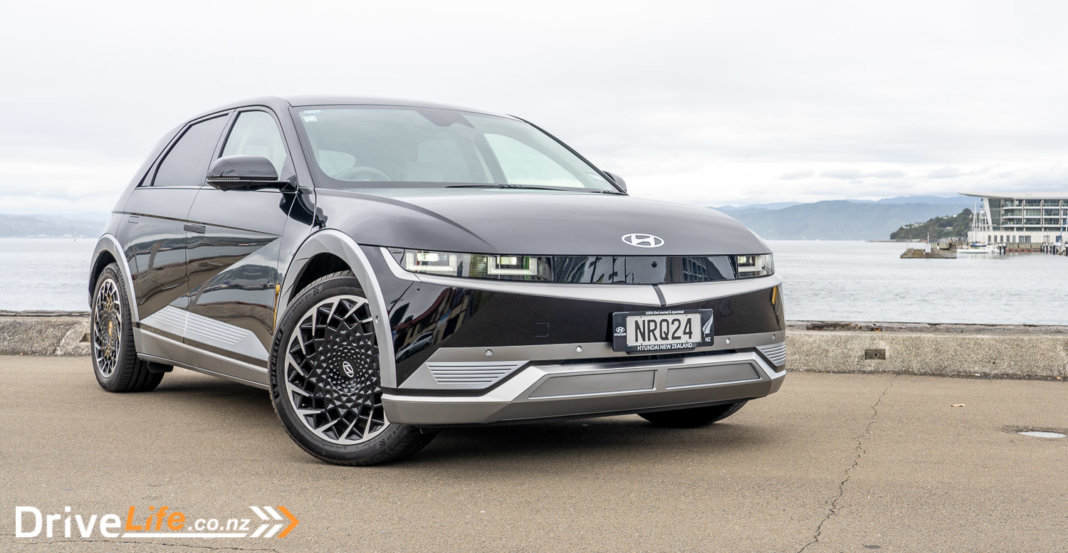Sometimes when we see an artist’s impression of a certain model of car, we drool. Surely it won’t actually look that good? More often than not, the actual production car doesn’t look anything like that artist’s impression, instead watered down for the general buying public. No point in scaring the punters with an out-there design.
This was the case when we saw the initial design concept for the Hyundai Ioniq 5; it looked amazing, but our gut feeling was that the production car wouldn’t look anything like the concept.
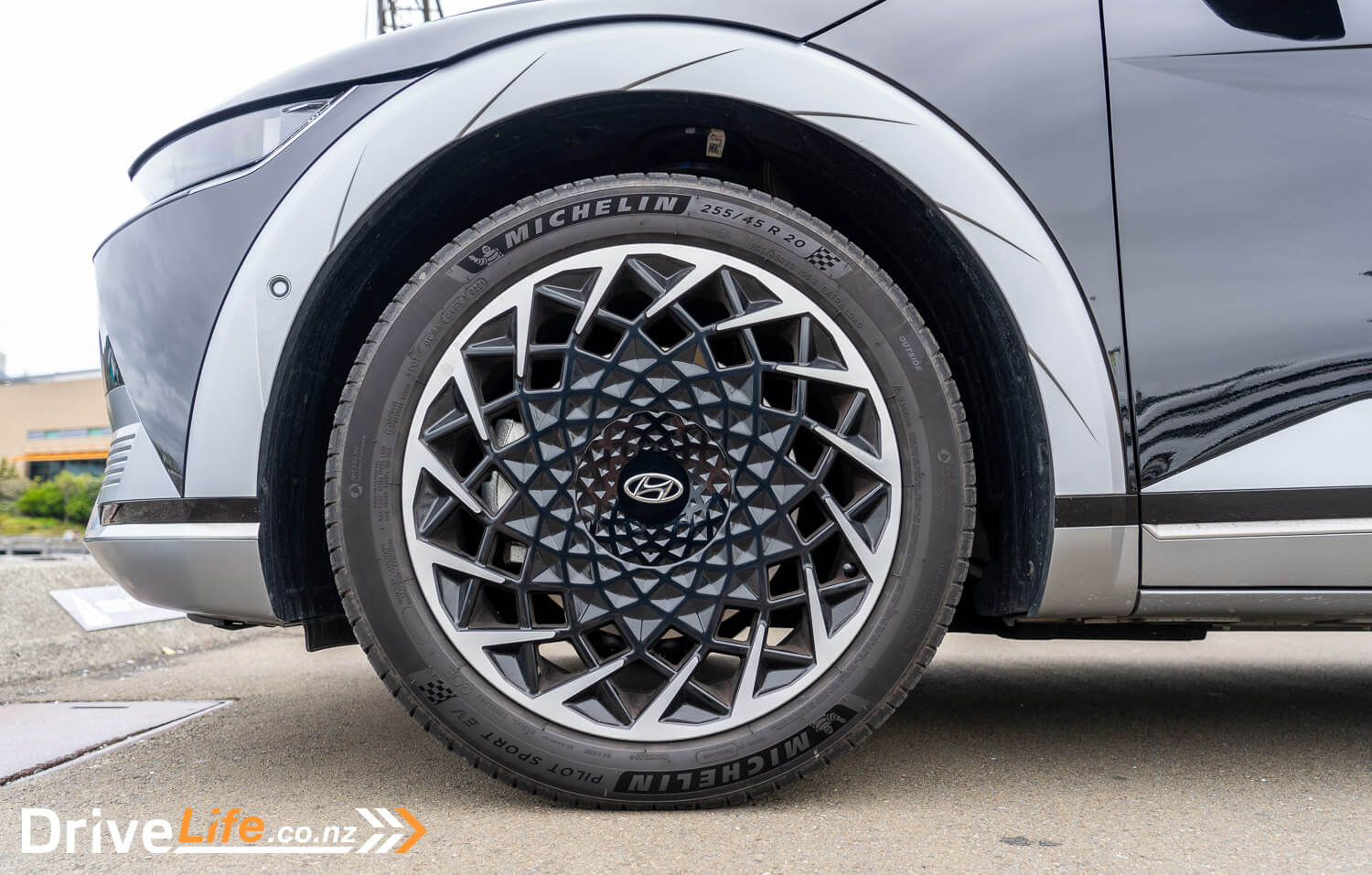
How wrong we were. In the flesh, the 2021 Hyundai Ioniq 5 looks exactly like they proposed, and we applaud Hyundai for having the balls to build this space-age-looking car. It could have backfired on them.
Of course, it’s not all about the looks. The Ioniq 5 is the first model built on the Electric-Global Modular Platform (E-GMP), which is a true EV chassis, and not a chassis taken from a petrol car and then adapted for an EV.
With hopes set on high (and – dad joke – phasers set to stun), we all got behind the wheel of the 2021 Hyundai Ioniq 5 Limited for an extended review. Three of us will be driving the car, and give our honest opinions.
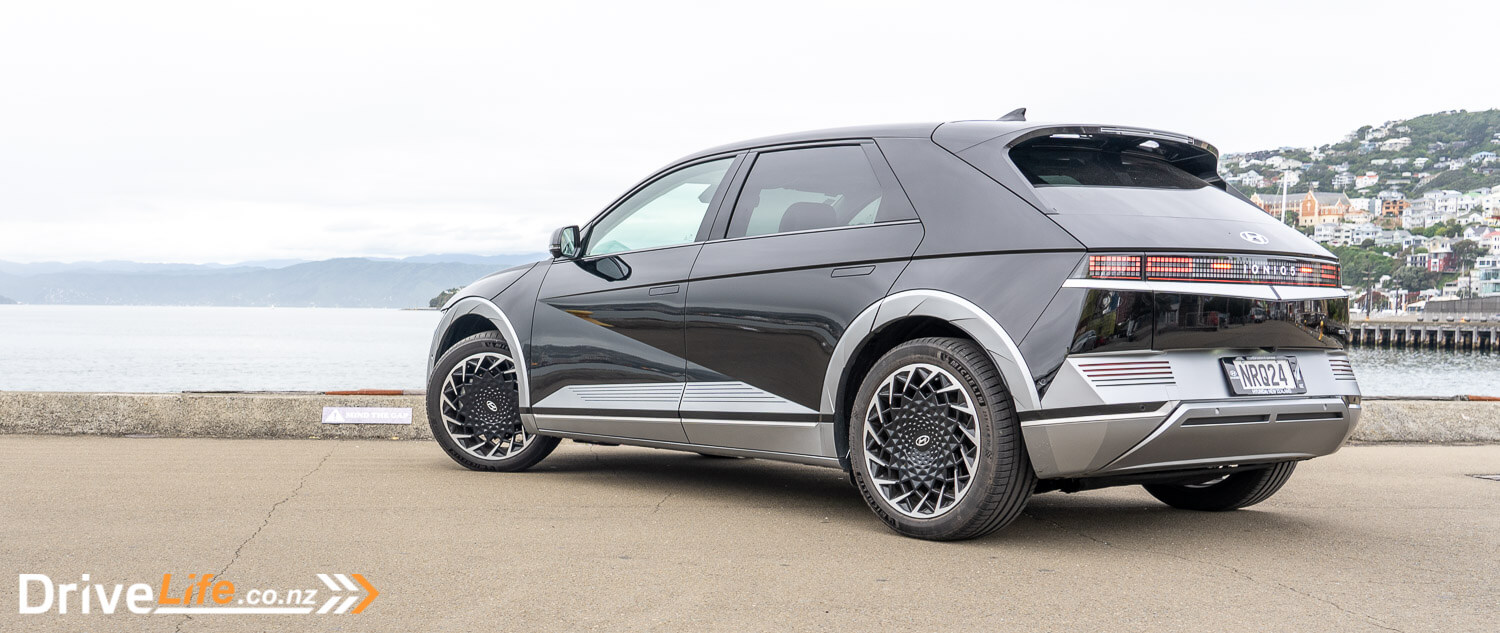
What We Like and Dislike About The 2021 Hyundai Ioniq 5 Limited
| What we like | What we don’t like |
| Design Space Smoothness Sheer silence inside Tech Grip in all weather Ride quality Driving dynamics/handling Energy economy | No rear window wiper No mats as standard Glitches in our test car Audio reverts to Sounds of Nature Seat comfort |
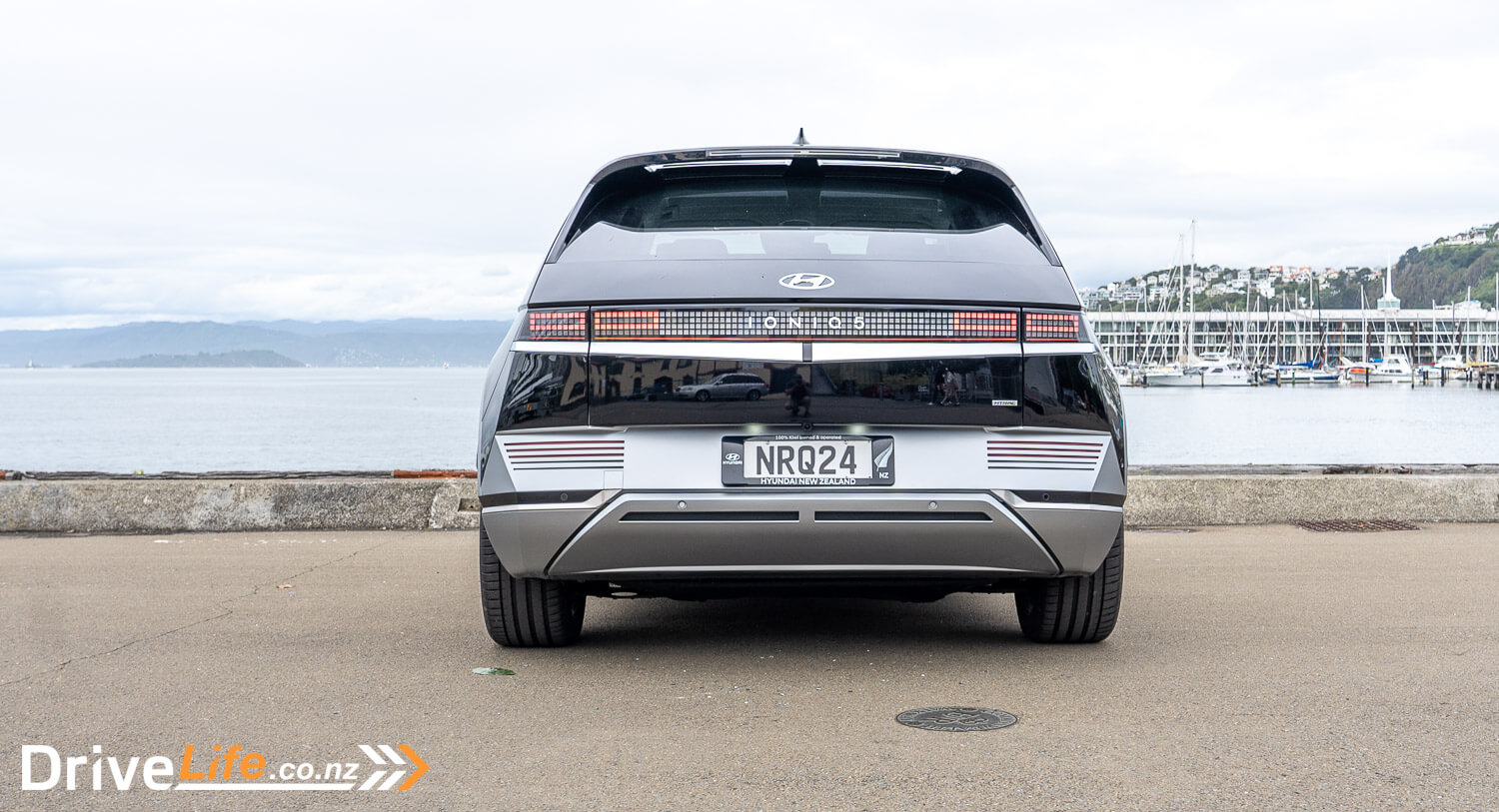
What’s In The 2021 Hyundai Ioniq 5 Range?
There’s a good selection of models to choose from here, five of them in fact. Starting at the bottom end, there’s the $79,990 rear-wheel-drive (2WD) base model with a 58 kWh battery pack. This price includes on-road costs, so only this base model is eligible for the government’s Clean Car Discount of $8,625.
Next up is the same base model with a 72kWh battery pack for $89,990, then the all-wheel-drive (AWD) version of the same car priced at $94,990.
The last two models are specced up, with the 72kWh 2WD Elite at $96,990, and at the top is the 72kWh AWD Limited at $109,990, or $112,990 with a solar roof.
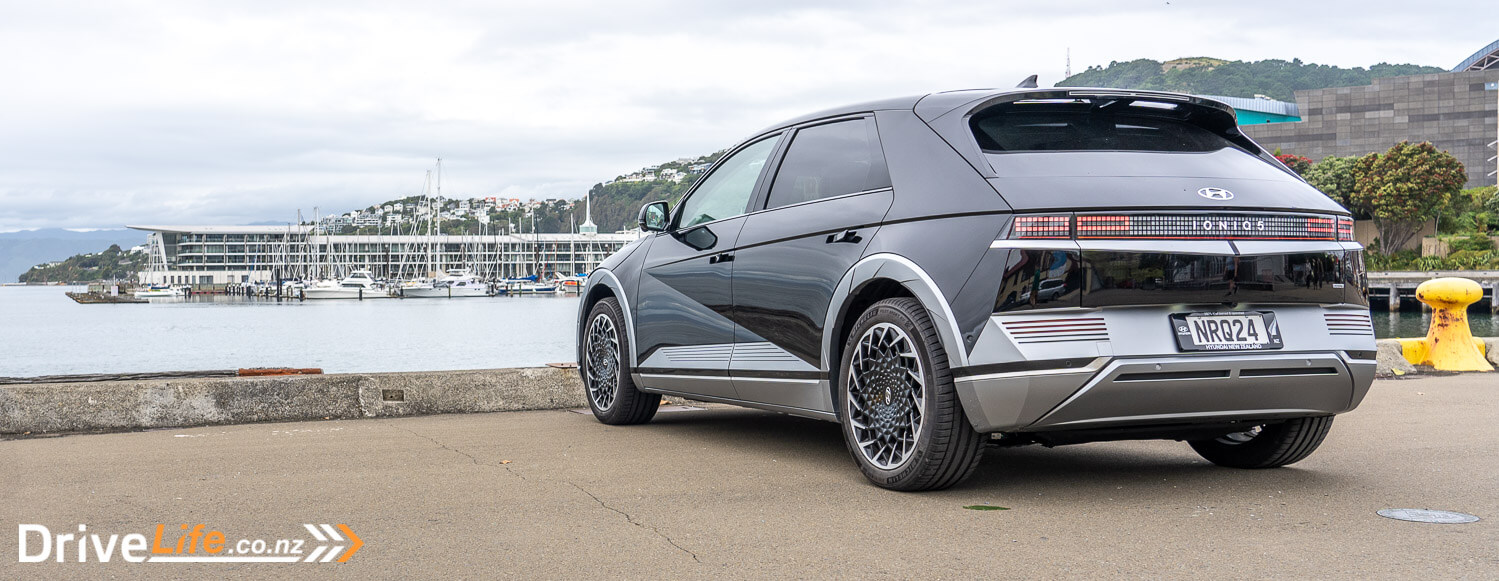
The base model with the smaller battery has a 125kW electric motor that puts out 350Nm of torque, while the 72kWh models in AWD have a 160kW electric motor with the same torque output.
AWD models of course also have an electric motor at the front, at 70kW/255Nm.
All models have 3 levels of brake regeneration with paddle shifters for regen adjustment. The battery pack is Lithium-ion polymer with water cooling, and the Ioniq 5 has a 10.5kW onboard charger.
The lower three models are fitted with 19” alloy wheels, while the Elite and Limited are fitted with 20” alloys.
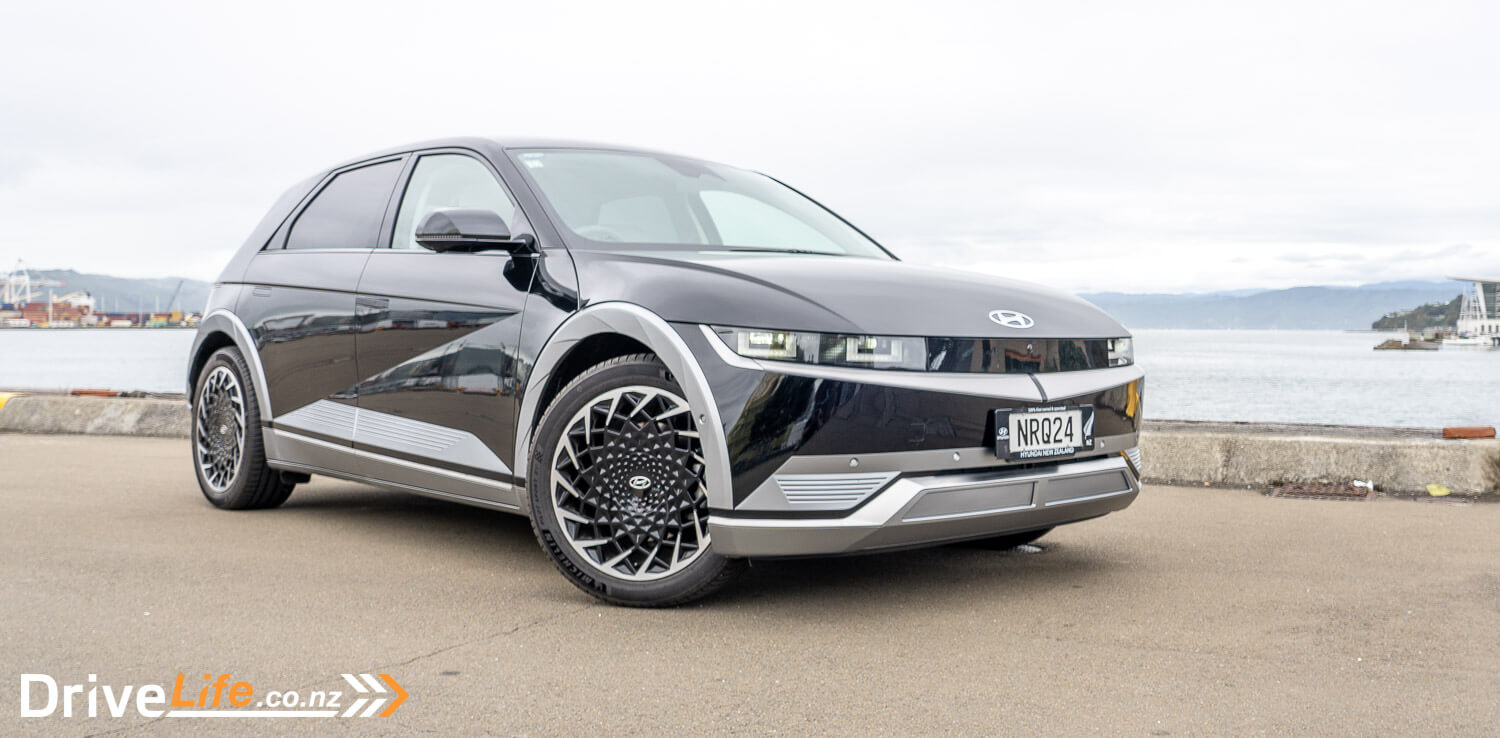
2021 Hyundai Ioniq 5 Standard Equipment Highlights
- Tyre pressure monitoring
- Electrically folding and heated mirrors
- Pixel-type LED headlights
- Daytime running lights
- LED taillights
- Solar UV protection glass
- Leather steering wheel
- 8-way electric driver’s seat
- Wireless phone charging
- Interior mood lighting
- Keyless entry and start
- Hyundai Active Locking Operation (HALO) including speed sensing auto door locking
- A 12.3” touchscreen audio system
- SatNav
- Apple CarPlay and Android Auto
- Dual-zone AC
- 12.3” colour driver’s display
The Elite adds:
- Privacy glass to rear doors and tailgate
- Full leather interior
- An 8-way electric passenger’s seat
- Heated front seats
- Heated steering wheel
- Bose premium audio with 8 speakers
The Limited then adds:
- A Vision Roof with retractable blind
- Relaxation Mode for both front seats
- Memory settings for both front seats
- Ventilated front seats
- Electric rear sliding seats
Our review car had the solar roof which took the price from $109,900 to $112,900.
You get to choose from 9 colours for your Ioniq 5 but be warned, they are all extremely subdued. There isn’t a single bright colour in the selection, but there are 5 variations of silver/grey. There’s a pale green, a pale blue, white and black. The future is looking a little bleak if this is the start of a new trend.
For a full list of specs and options available for the 2021 Hyundai Ioniq 5 Limited, jump on over to the Hyundai New Zealand website.
How Does The 2021 Hyundai Ioniq 5 Limited Compare To Its Competition?
There’s a bit of no-man’s land going on here. There seems to be a huge gulf between cars like the EQA and Model 3, then the top and mid-spec Ioniq 5 models, and then you have another $40K or so to cars like the Jaguar iPace, Audi e-tron, and Mercedes-Benz EQC.
Early in 2022, we’ll see the AWD Mercedes-Benz EQA 350 launched, and we expect that will be priced very close to this top-spec Ioniq 5.
| Make/ Model | Battery Capacity kW/h | Power/ Torque kW/Nm | 0-100km/h seconds | Range (WLTP) | Boot space, litres | Price |
| Hyundai Ioniq 5 Limited AWD (SUV) | 72.6 | 225/605 | 5.1 | 430 | 537 | $109,900 |
| Tesla Model 3 Performance AWD (sedan) | 82.0 | 258/527 | 3.3 | 567 | 542 | $95,900 |
| Mercedes-Benz EQA FWD (SUV) | 66.5 | 140/375 | 8.9 | 400 | 340 | $85,500 |
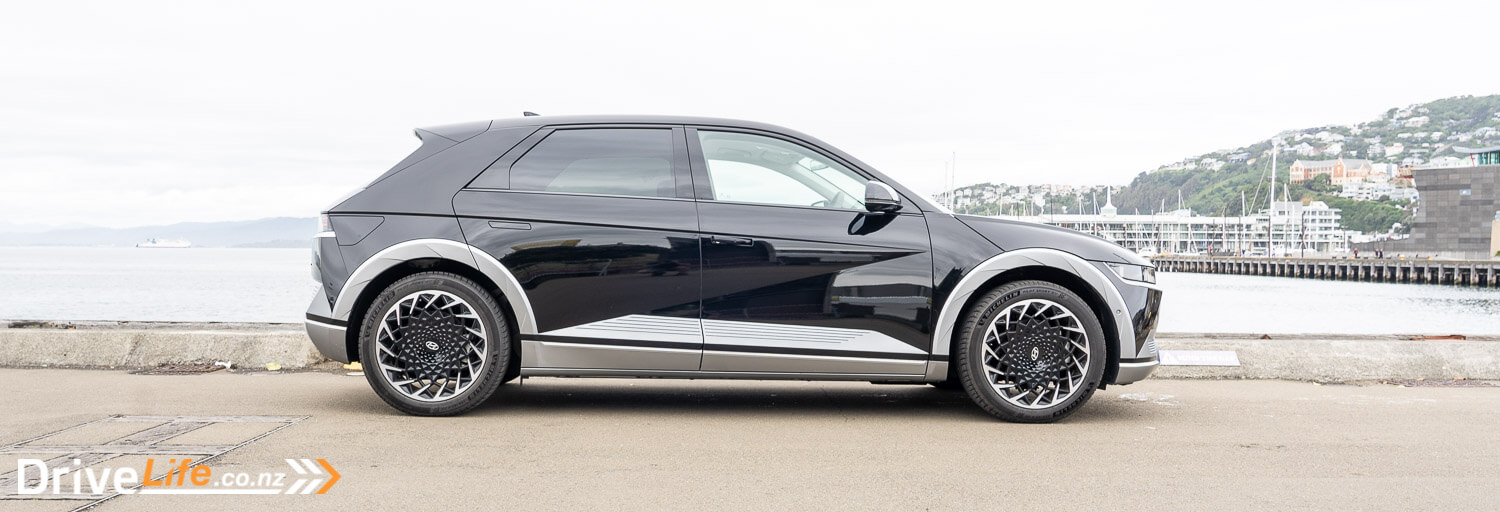
First Impressions Of The 2021 Hyundai Ioniq 5 Limited
Someone summed it up when they first saw the car; “it’s Robocop’s car”, he said. I thought that was right on the money. Finished in black, our test car turned heads everywhere, and I hate to use that well-worn cliche, but it really did. On the motorway, parked in the street, sitting at the lights, people gawked. One day, people walking on the other side of the road turned to stare, then walked back to look at the rear of the car, then walked past again. It has that effect on people.
So then, this isn’t a car for introverts.
After we tested the Mercedes-Benz EQA last month, we felt glad that Mercedes-Benz didn’t make the EQA all strange and EV-like, instead of keeping the entire car as standard to Mercedes-Benz as they could – and they succeeded.
The Ioniq chucks that theory out the spaceship window, and starting with a clean sheet of paper and an all-new chassis, Hyundai gives us something that is instantly recognisable as an EV, and the most outlandish design currently available. The pixel headlights, the angled slashes in the wheel arch trims, the electrically opening front air vents, it’s all very cool and modern.
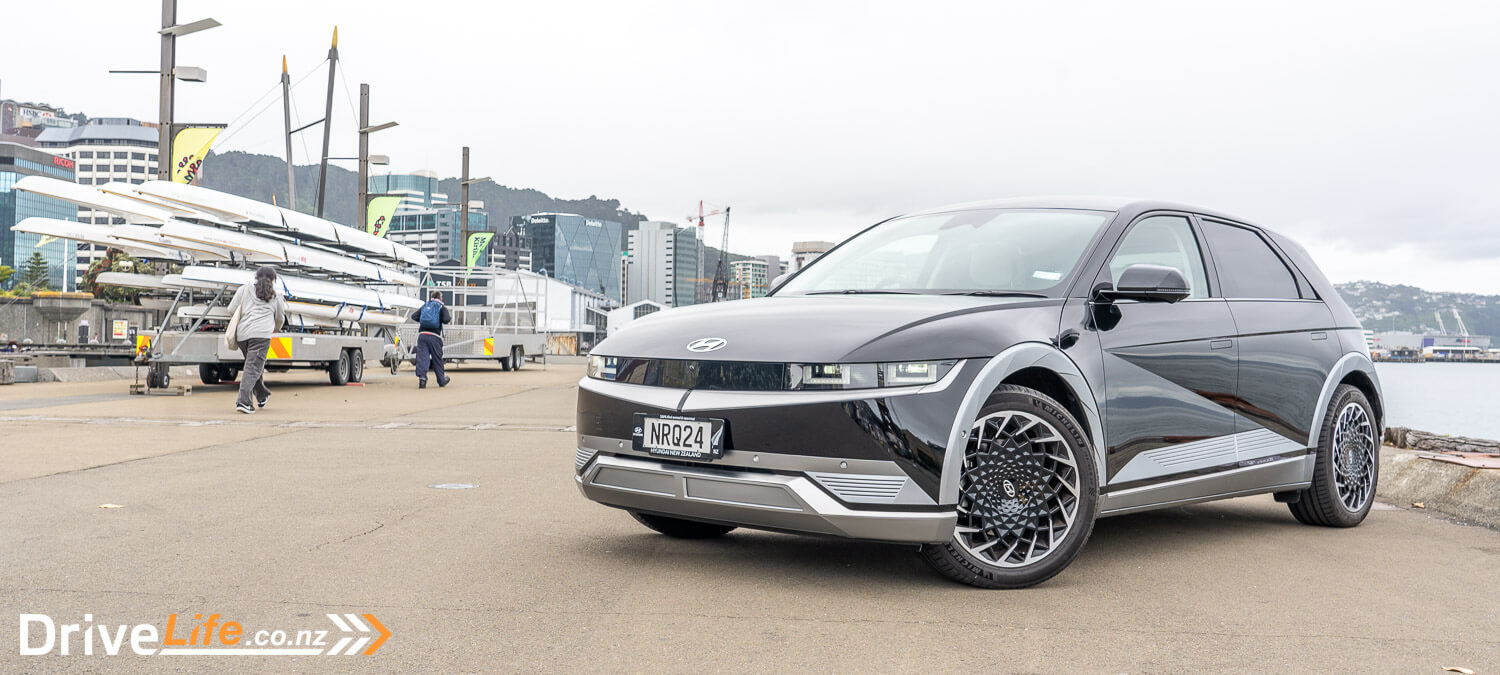
The car has a clamshell bonnet, so no real front guards to speak of, but we did note that the bonnet overhangs the edges of the front bumper and the small rear panel a bit too much. The panel gap for the bonnet was larger at the top than the bottom, too. Hopefully, this is only an issue with our test car.
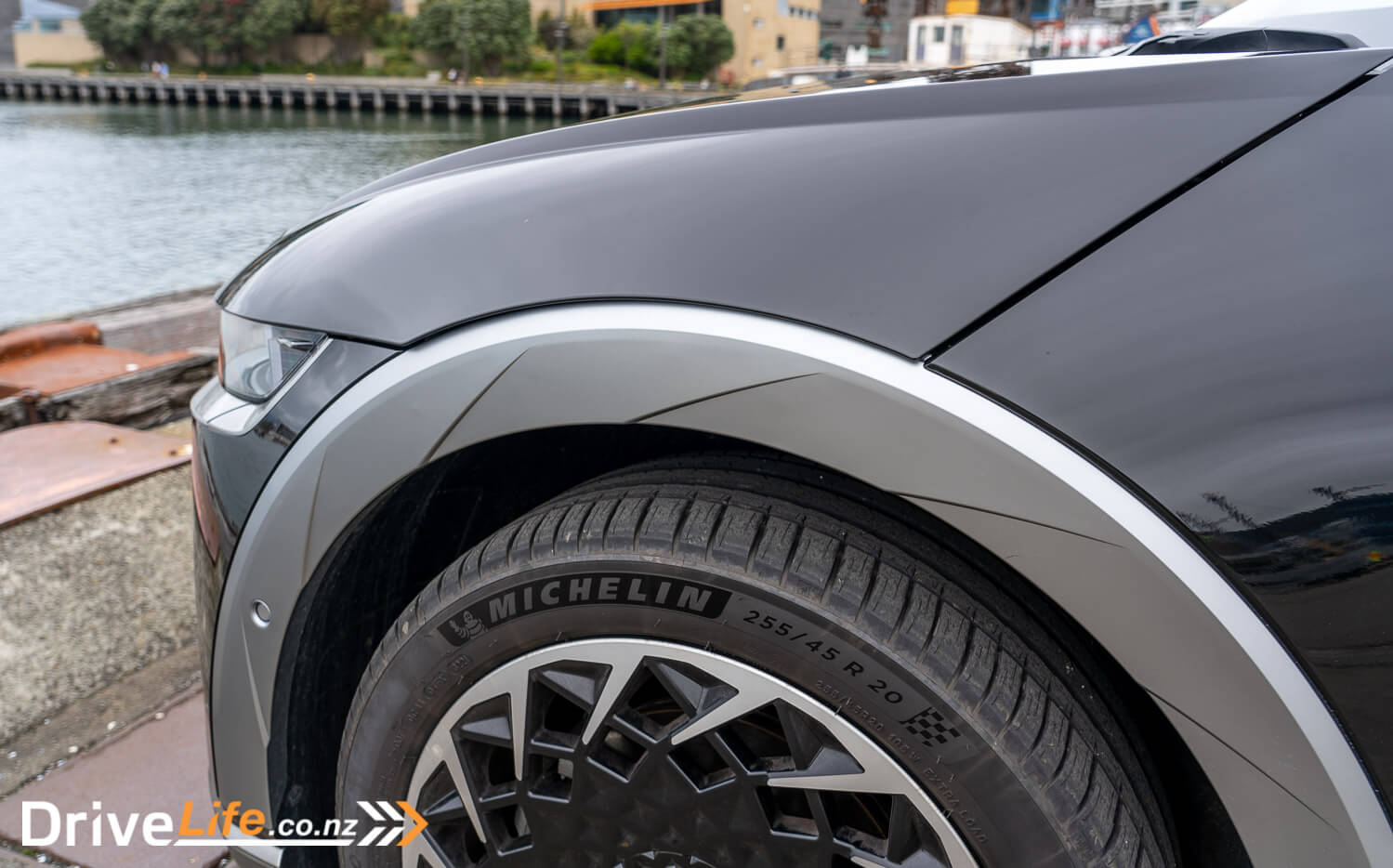
While I love the shape and design features, not everyone was won over. In fact, it was a 50/50 split of love/totally do not love. That would be the EQA buyers, I expect.
The bottom line is if you want the most futuristic-looking EV on the New Zealand market today, the Ioniq 5 will be at the top of your list.
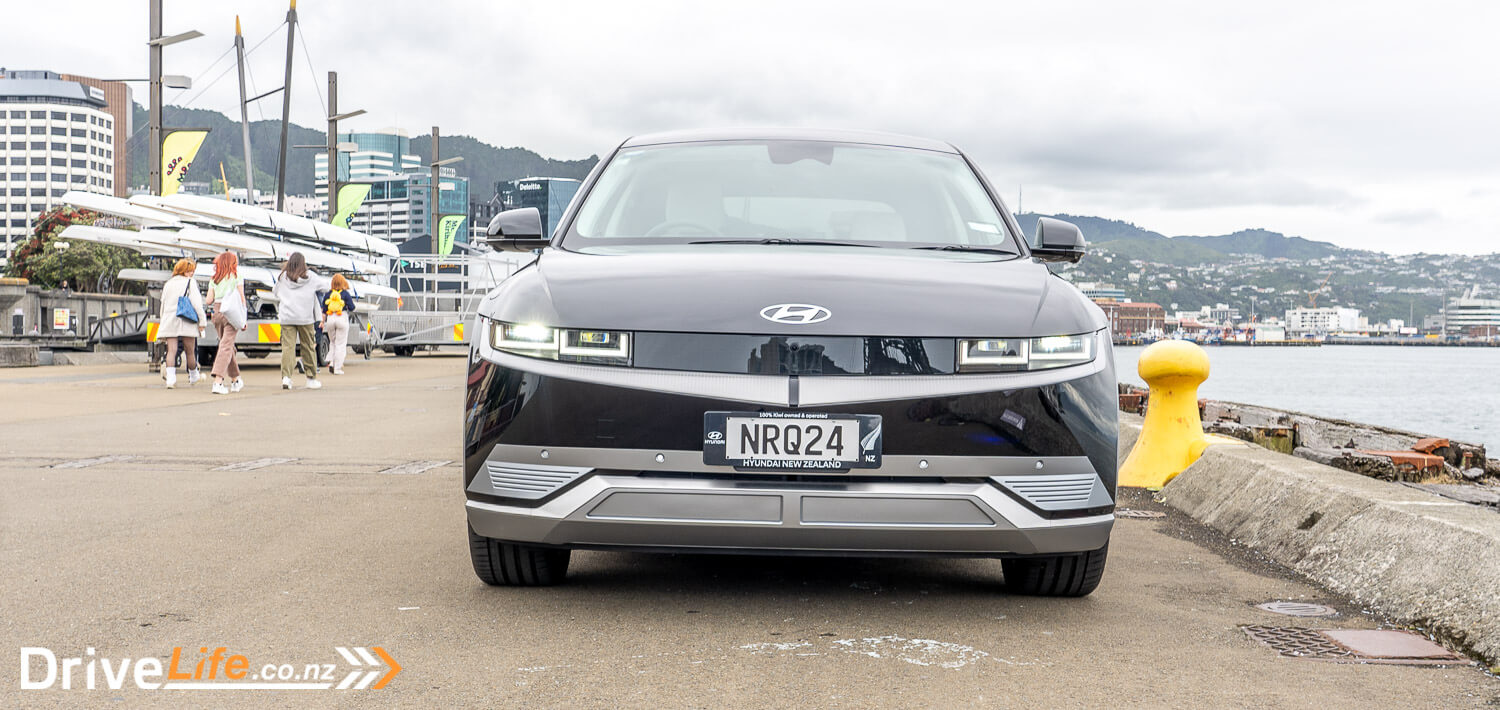
What’s The Interior Like In The 2021 Hyundai Ioniq 5 Limited?
With huge windows all around and a white interior, on opening the door our test car was like a glasshouse. All very light and airy and a welcome change to all those cars currently available that are tomb-like. It feels huge, spacious, welcoming and modern.
Some of this spaciousness is down to the lack of a transmission tunnel. Hyundai has made the most of that new EV chassis and has removed anything blocking the area in front of the driver and passengers, to the point where it felt like there should be a bench seat. It reminds me of cars from the 1960s with their bench seats and 3 on the tree. I don’t mean that in a negative way; after getting out of the Ioniq 5 and into a ‘normal’ car, it did feel like I was entombed.
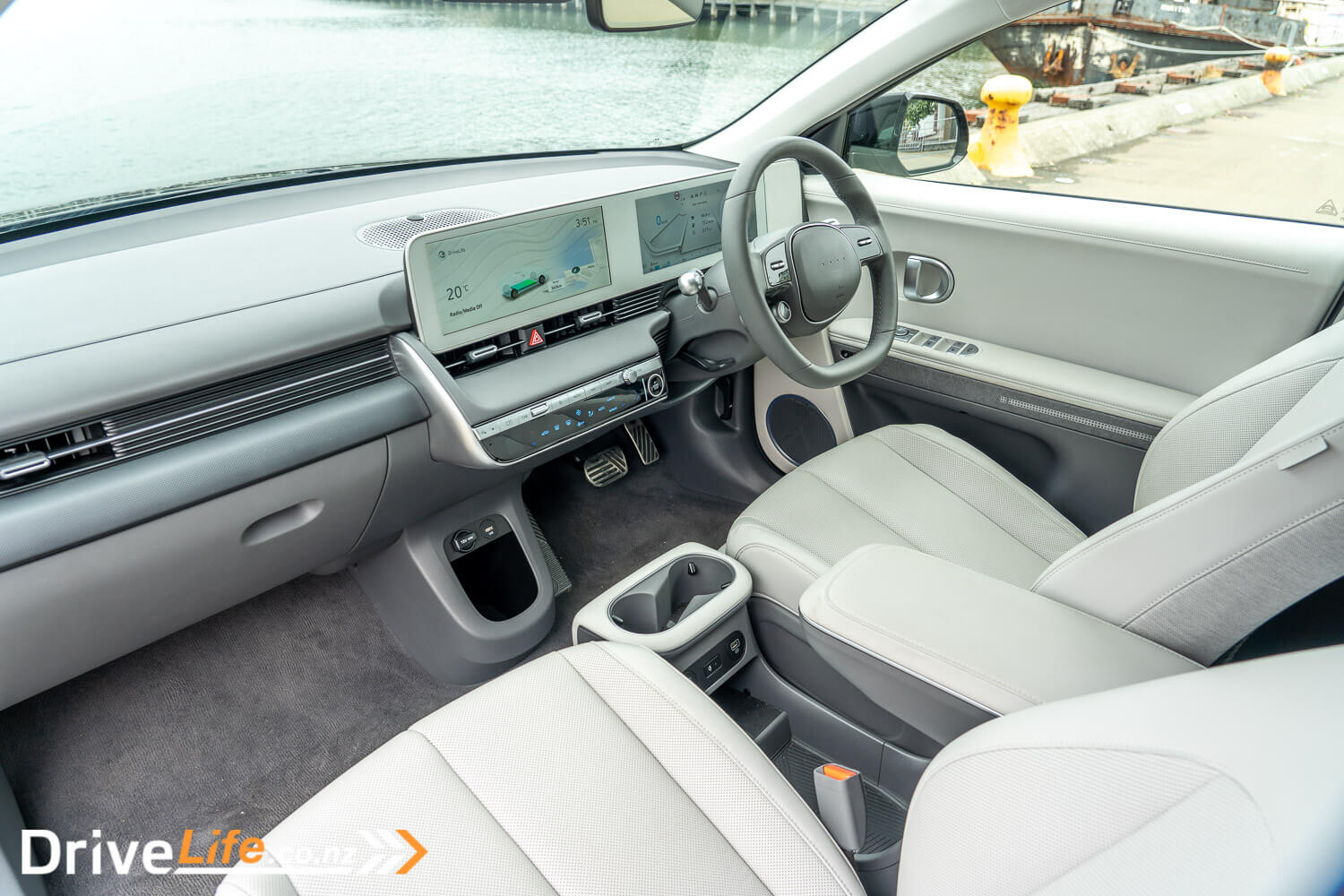
Hyundai has created a ‘Universal Island’, which is a centre console that is movable back and forth by 140mm. If there’s no one in the middle rear seat, you can shift the island rearwards for, well, I don’t actually know why. Moving it backwards opens up that front area, but moves the armrest back. It’s a cool party trick and makes the front even more spacious, but I’m not sold on the benefits. On top of the island are two cup holders, perfectly placed for safe and easy access. I was expecting them to be illuminated as a futuristic touch (although Ford has been doing this for years), but perhaps on the next release.
The lower-front part of the island has a Qi wireless phone charging pad sitting flat, and that has a 15-watt cooling pad to keep your phone’s temperature down. We have noticed that often a phone will get toasty hot on a wireless charging pad, so this cooling pad was a welcome feature. There’s also two USB-A ports on the island, and two more in the rear of the car. There’s another USB-A port up front, along with a 12-volt charging socket. I was surprised to see USB-A ports in this modern and futuristic car – surely it should have the latest standard, USB-C? Small point, but still didn’t seem right.
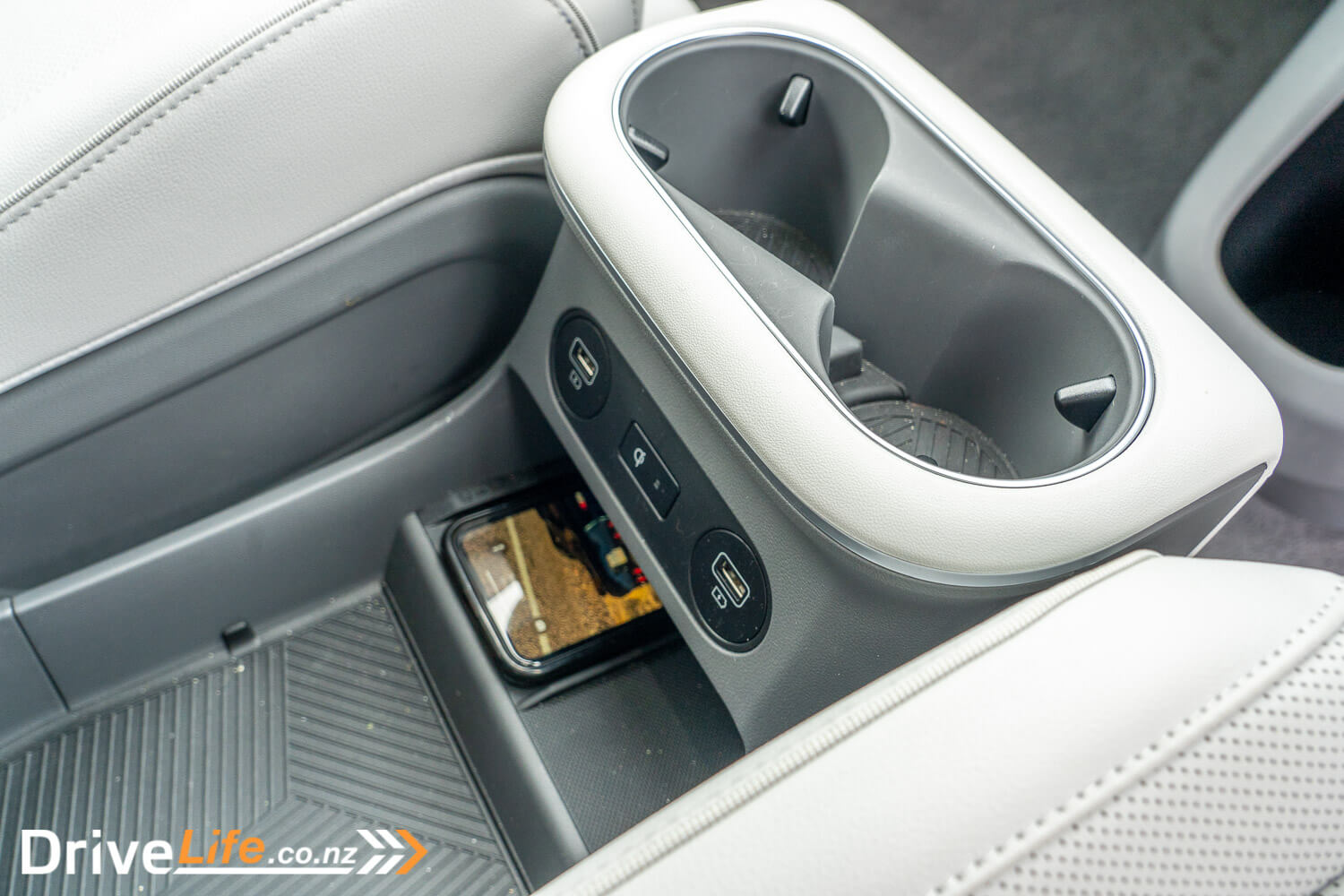
The steering wheel is leather with a flat bottom. It feels great to the touch, and to its lower-right is the gear change selector. It’s a stalk in this car, but unlike other cars that use stalk-based gear changes, you don’t move the selector up or down, and instead turn the knob up (for Drive) or down (for Reverse). I did struggle with this at times; my brain felt that it should be up for reverse, but eventually, I got the hang of it without thinking too much. The gear changes happen quickly, unlike some Fords with their rotary gear selector that can be a bit sluggish.
Under the steering wheel are, of course, the brake and accelerator pedals. Nothing new here, but I simply love that Hyundai has put a big ‘+’ on the accelerator, and a big ‘-’ on the brake pedal. I smiled every time I saw these. A little thing, sure, but a nice EV touch.
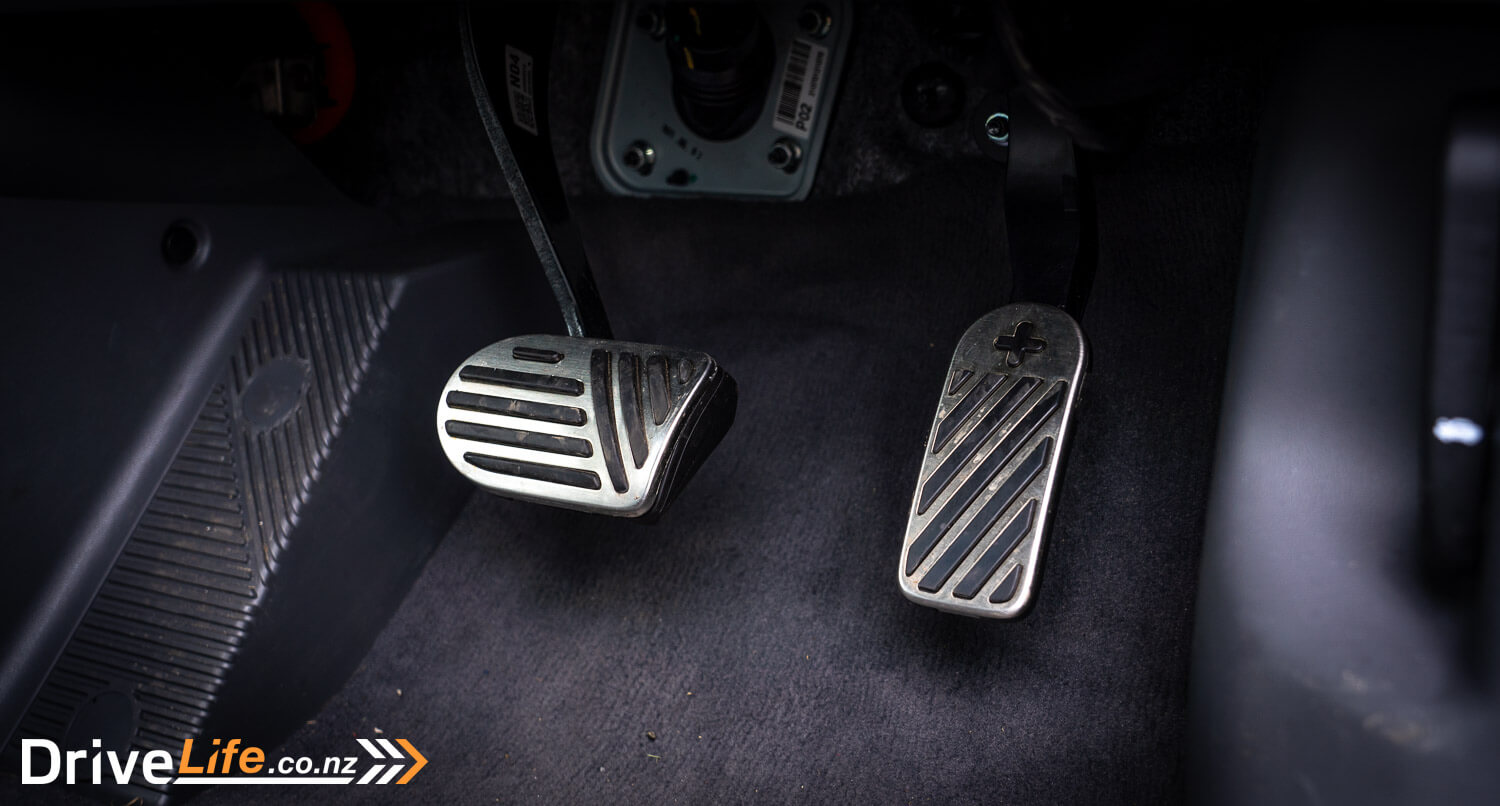
The driver’s display and main infotainment screen stand out proud on the dash, with no thoughts of integration here. The main screen is quite a reach away, and with many functions only operated through the screen, this got a bit painful at times. Perhaps it was my shorter arms, but then taller people are going to have the seat back even further. I know no manufacturer does this, but an adjustable screen would have been perfect here. We’ll talk more about the screens in the Drive section later.
There’s plenty of headroom in the Ioniq 5; our car was optioned up with the solar roof, so no sunroof. All doors have full-length grab-pulls, just like we saw for the first time in the Mercedes-Benz S450 last month. Once you get the idea, they are brilliant; you stretch your fingers around any part of the door’s armrest and pull. The entire armrest has a space behind it for your fingers to grab it. Much easier, quicker, and safer than other grab-pulls.
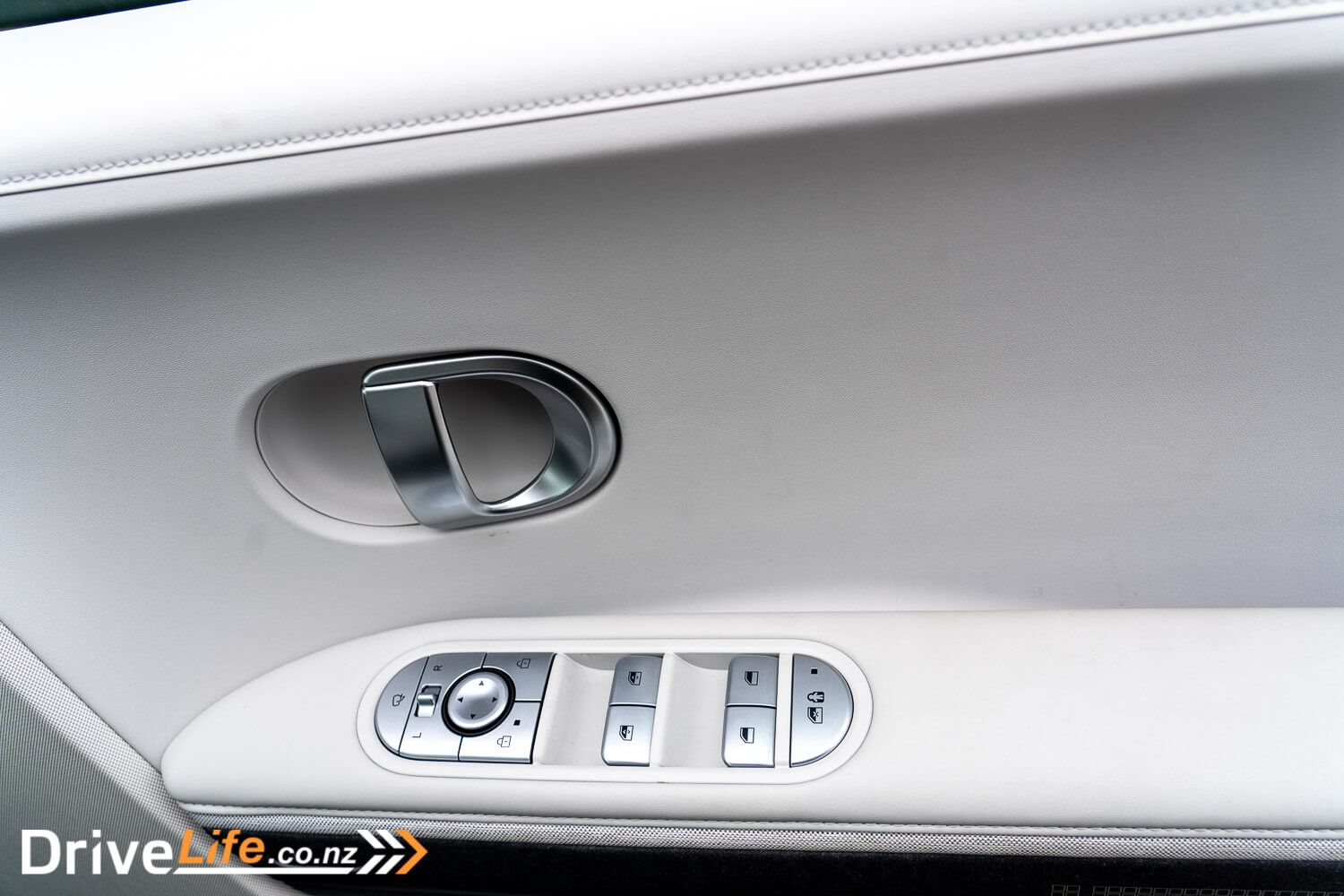
The glovebox on this car is actually on a slide, so it’s really like a kitchen drawer, and I love it. No more opening up the glovebox to have your stuff fall out on the floor. I hope other manufacturers adopt this idea, it’s simple and brilliant. There’s quite a bit of space in there, although the massive owner’s manual takes up a fair bit of this.
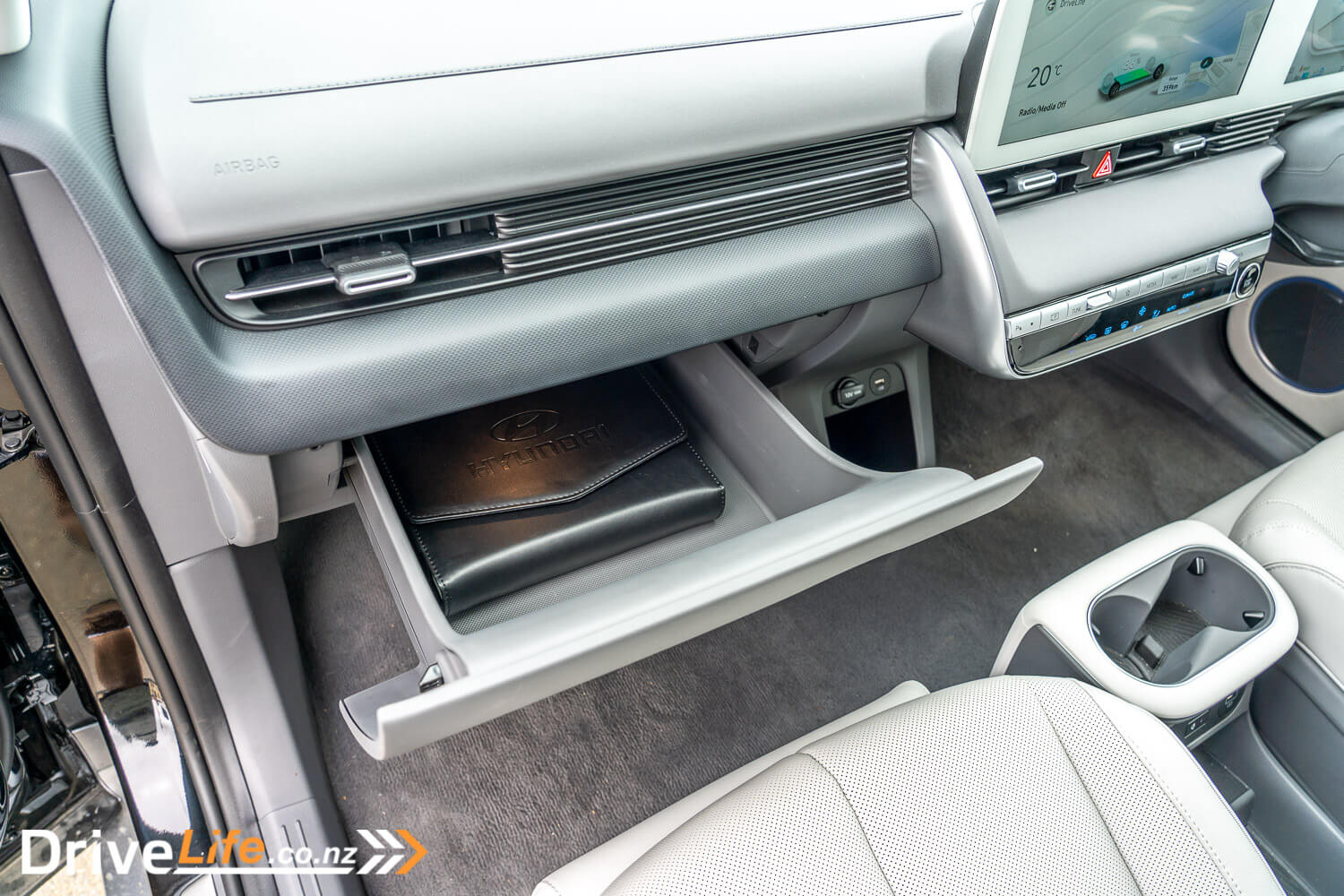
We haven’t even got to the choice of materials in the cabin on this car, or the quality. Recently, we’ve seen a huge lift in the quality of design, materials, and fit/finish in Hyundai cars, and the Ioniq 5 lifts this again. It’s at European standards, and I’m talking certain German brands. Everywhere you look or touch, it looks great or feels even better. Nicely done, Hyundai.
Back seat passengers are well catered for with an abundance of rear legroom and two-stage heated seats, using buttons on the door to control these. The side of the front passenger’s seat has three buttons on it that face the centre of the car. One of these is for setting the front seat to Relaxation Mode, discussed later. The other two are for electrically moving the 60/40 rear seats forward or back. Rear seat passengers also get their own (manual) window blinds.
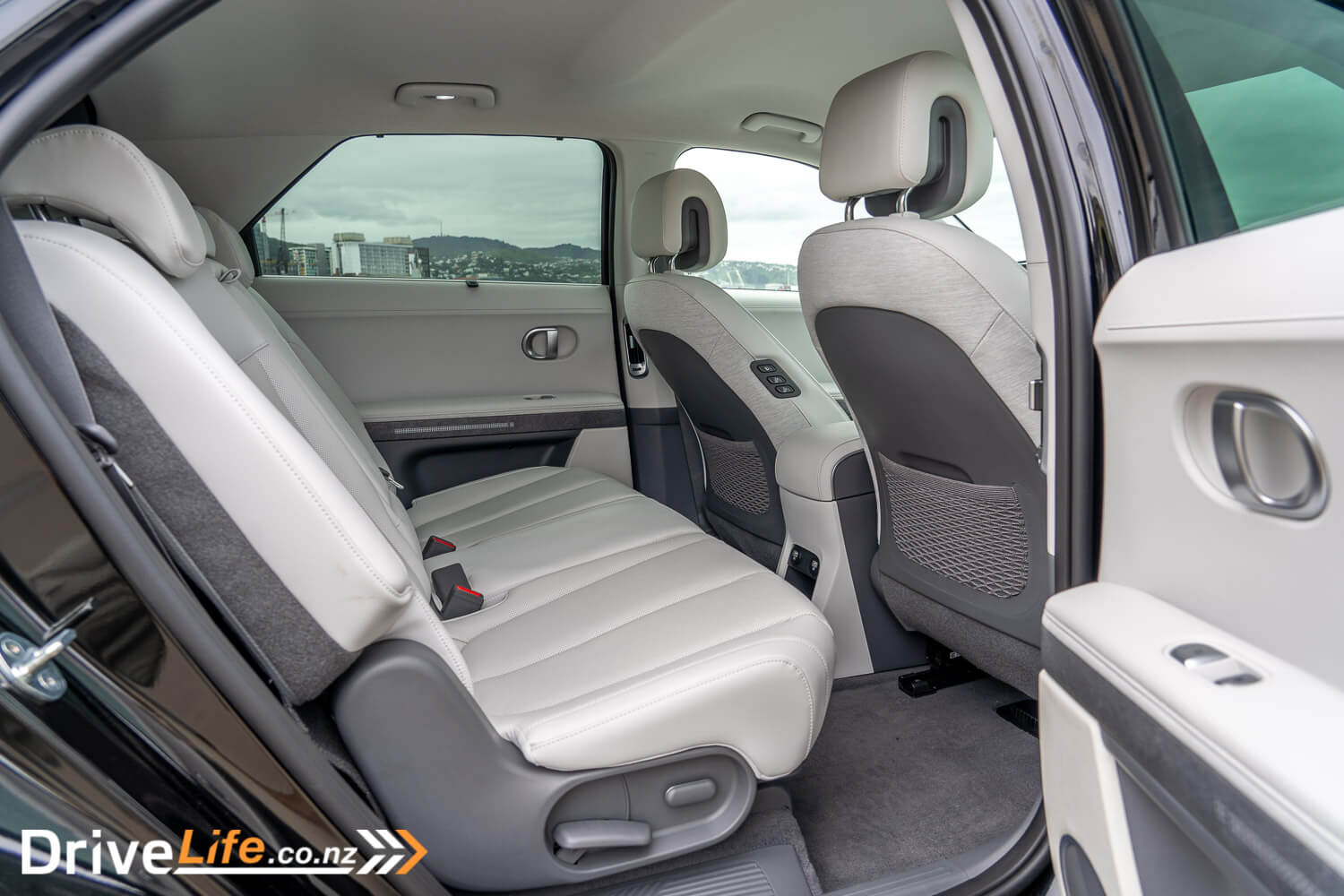
Very surprisingly, at $112,000 you don’t get any floor mats, instead, you’ll need to pay an extra $270 to protect your carpets. Our test car did not have the mats, and you could already see the wear on the carpets. It feels like a slap in the face to pay this sort of money and not get any mats.
The boot is large at 537 litres and very usable. Under the floor sees a wide and long storage area, although it’s quite shallow and some of the space is taken up with the subwoofer on this model.
As is common now, there is no spare but you do get a tyre pump.
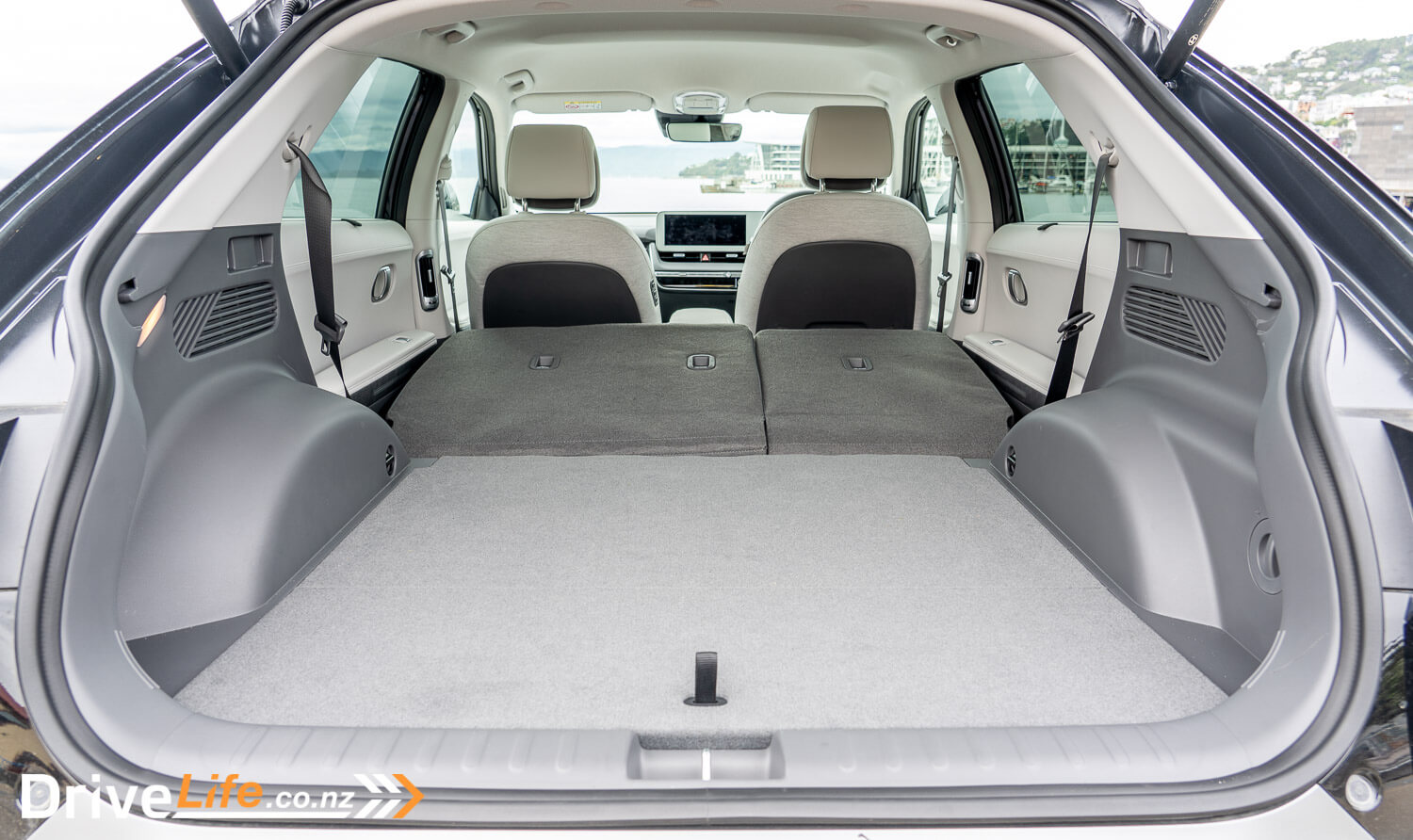
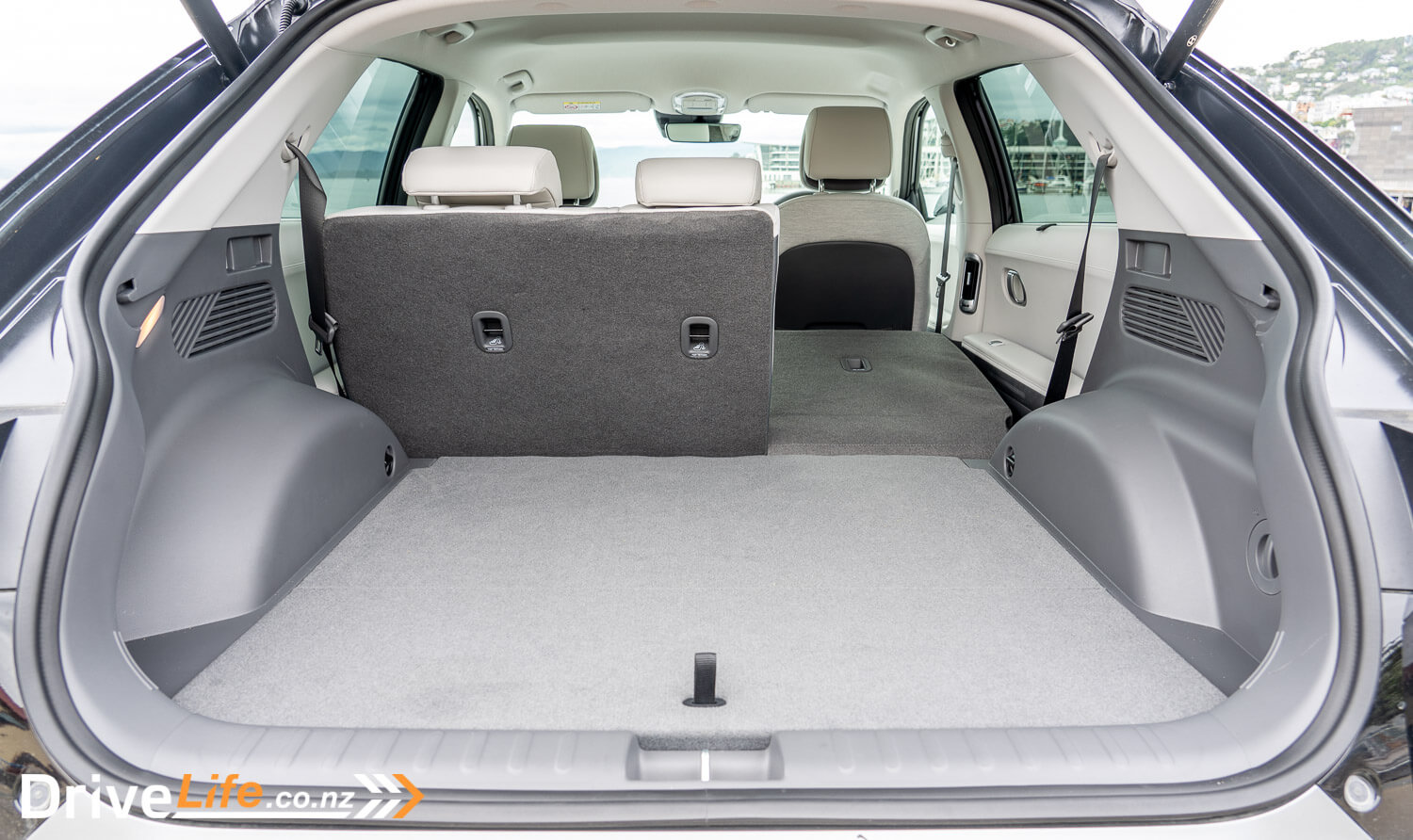
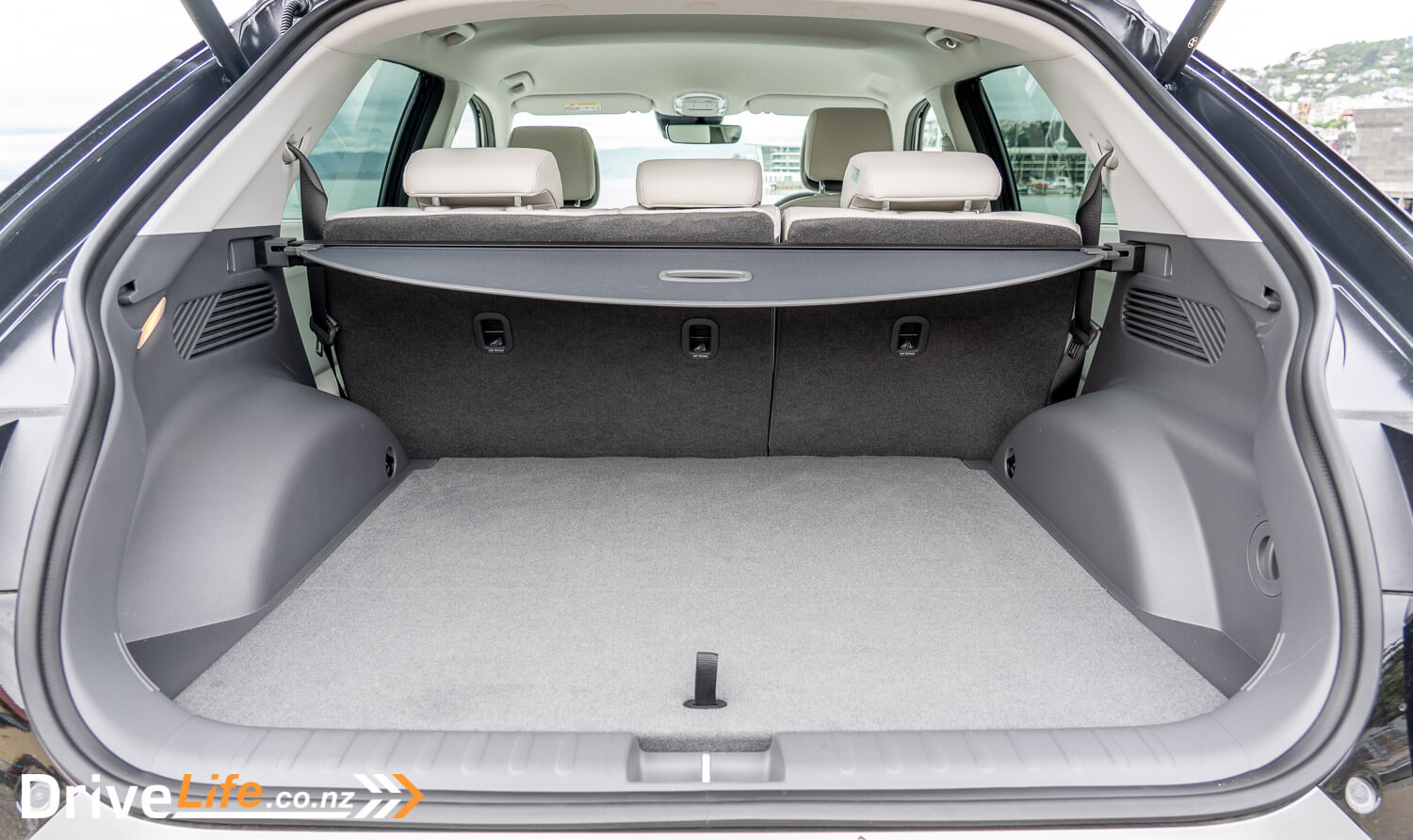
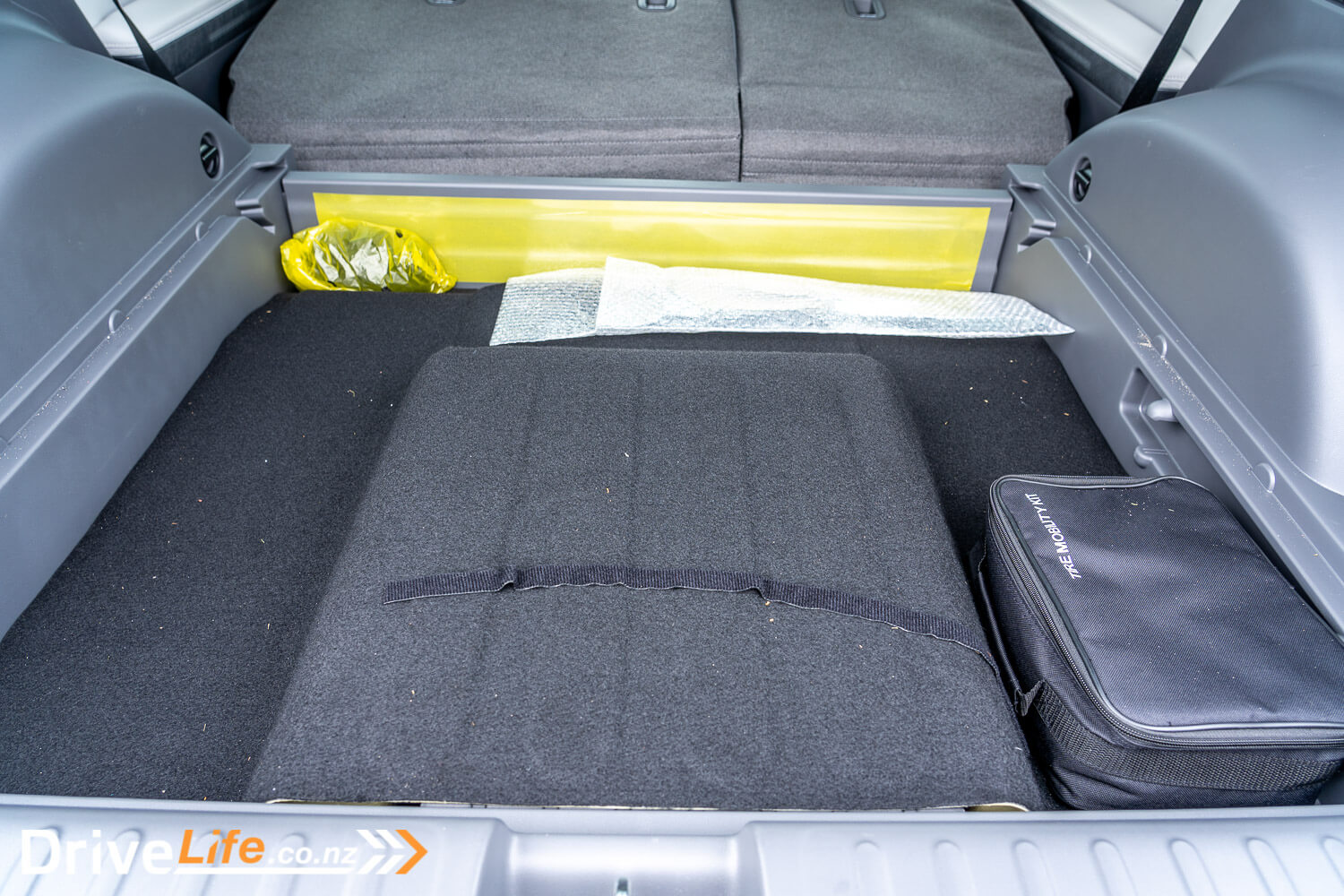
What’s The 2021 Hyundai Ioniq 5 Limited Like To Drive?
When you get close enough to the car, the door handles pop out from the body automatically, just like another certain EV brand. The handles aren’t the biggest so feel a little weird to pull on, but they look cool and they work well enough. Watching them slip back into the body once you are on the move is very satisfying for the magpie in me.
On picking up the Ioniq 5, it was fully charged and showed 420Km of range. Excellent.
The Ioniq 5 defaults to a Normal drive mode every time you start the car, with the drive mode button sticking out from one of the lower steering wheel spokes. It’s easy and simple, with two other drive modes available; Eco, and Sport. Eco really dulls your performance, to where the car feels pretty lethargic, and the weighting of the accelerator pedal is severe, so honestly, I didn’t use it. Sport mode peps everything up, and this is your demo mode when you take your friends for a ride.
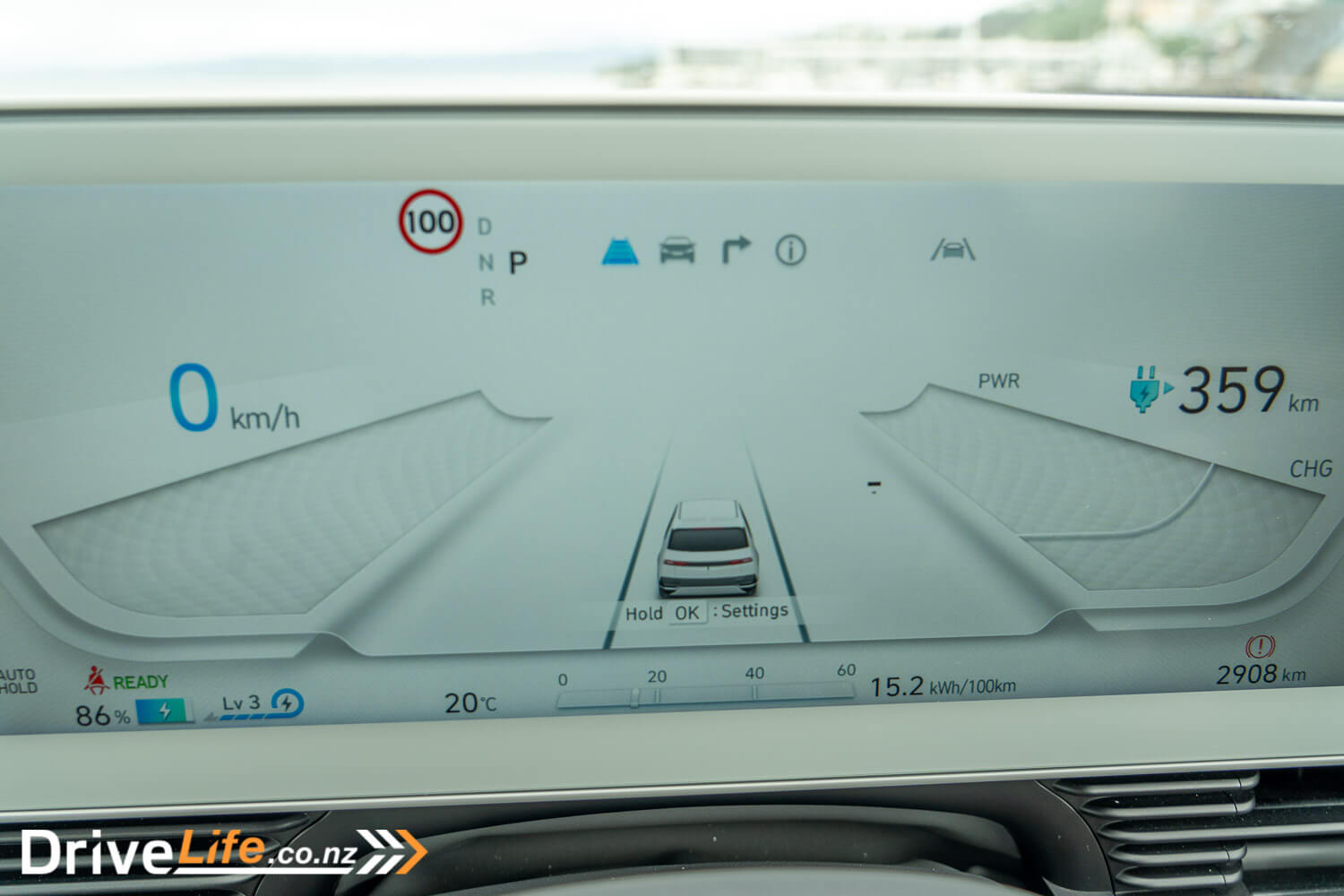
It was pouring down when I picked up the Ioniq 5, and I mean pouring down. This showed up two things for me in the Ioniq 5; performance off the mark in heavy rain isn’t a drama. In fact, from a start in Sport mode and your foot mashing the accelerator sees zero wheel spin, which is impressive for getting 605Nm of torque onto the road. It’s an great way to show off the electronics controlling the car when it can accelerate so quickly in the wet with no wheel spin. In Sport mode, the Ioniq 5 will get to 100km/h in 5.1 seconds.
The second thing the heavy rain showed me was that there is no rear window wiper. There I was on the motorway, and couldn’t see a thing out the back window. I spent ages trying to twist the wiper stalk knob, but couldn’t get the rear wiper to go. I’m embarrassed to say that it took me far too long to realise the Ioniq 5 doesn’t have a rear wiper. The difficulty seeing out the back window lasted my entire week and a half with the car, as it rained almost every day. Really, there’s no excuse for paying this much money for a car and not having a rear window wiper on an SUV with a more upright rear window. Even the cheapest car in the country, the $19,490 MG3, has one. Come on, Hyundai, lift your game here as it’s a little embarrassing.
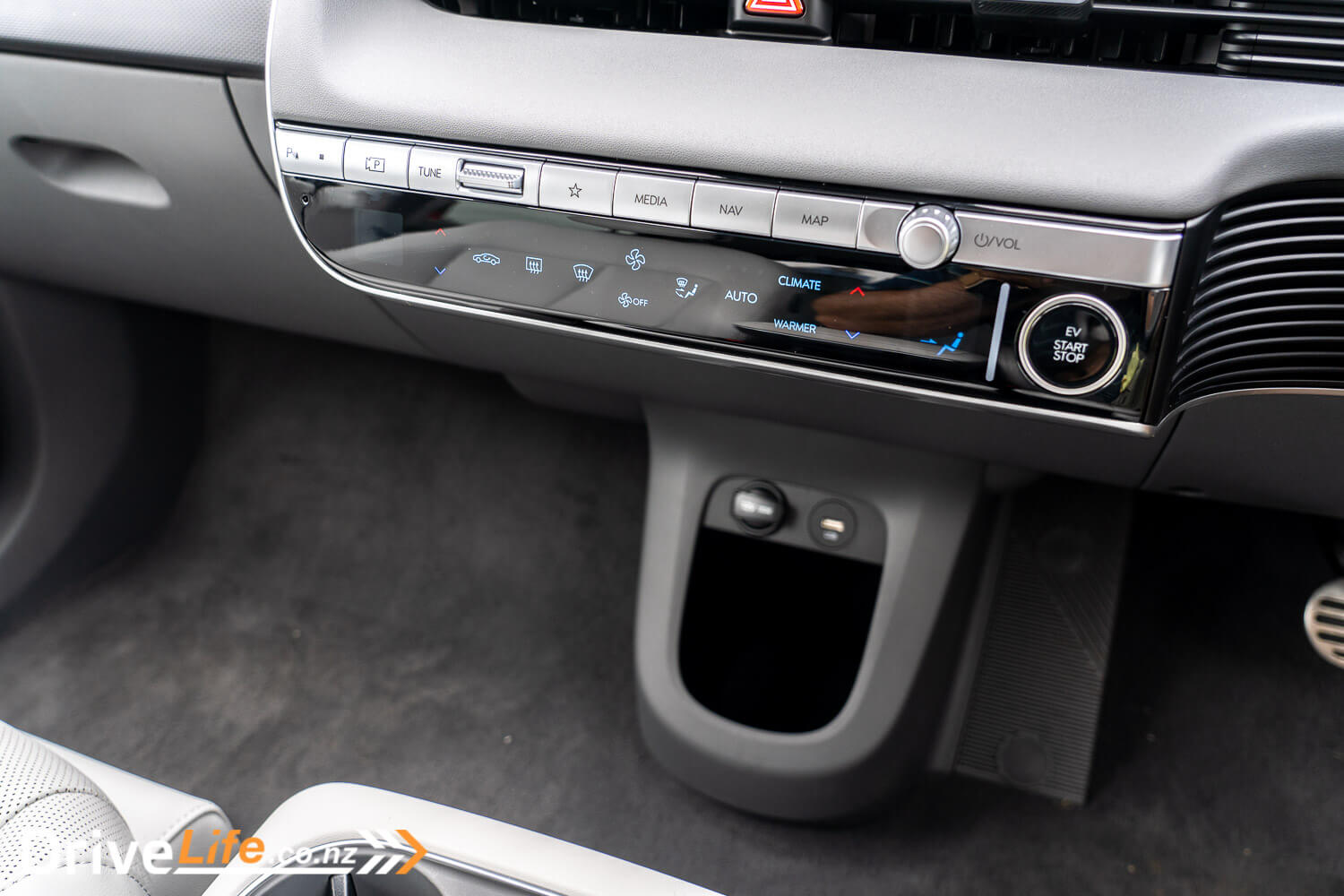
Regardless, the Ioniq feels sure-footed in any sort of weather. Quiet too – and I don’t just mean EV-quiet. Hyundai has done an amazing job of reducing all the road, tyre and wind noise down to very low levels. In fact, it felt like it was almost on par with the Mercedes-Benz S450 we had on test in October, and that car set the benchmark. It didn’t make any difference what the weather was like outside the car, inside was a cone of silence. Extremely impressive. On coarse-chip seal roads, there can be some tyre noise from the Michelin Pilot Sport EV tyres, but overall it’s superb.
One day when the rain eventually stopped, a hiccup in our test car really proved how much we rely on air conditioning. The AC in our test car was broken, so once it hit 23 degrees, that glasshouse-effect of nice, big glass everywhere increased the temperature levels inside the car to near unbearable levels. It was easy enough to open a window around town, but on the motorway with the windows down, there’s quite a bit of buffeting that assaults your eardrums. It’s not often we see a new test car with issues, but surprisingly in the Ioniq 5 there was more than just the AC at fault. The brake auto-hold sometimes stayed turned on when getting out of the car and back in, sometimes not. Also, while the SatNav system is excellent and simple to use, one day when using it, SatNav broke so the SatNav and Map buttons didn’t work anymore. This happened on and off for the rest of my time with the car
The audio mode button on the steering wheel played up as well, so it would let you pick another audio source, but just one. This wouldn’t normally be an issue, but the audio source in the Ioniq 5 reverts to Sounds of Nature every time you get out of the car, so you’d have to manually select Bluetooth or Radio etc. We’re seeing this issue of audio not defaulting to the previous selection pop up more and more lately when for a few years it simply wasn’t an issue as manufacturers got this sorted. Hopefully, this was just an issue in our test car.
Sounds of Nature is included in the Ioniq 5, as it is with many other Hyundai and Kia cars. Instead of having music or the radio playing, you can choose Sounds of Nature and have sounds instead from places like the beach, a cafe, or someone walking in deep snow (true story).
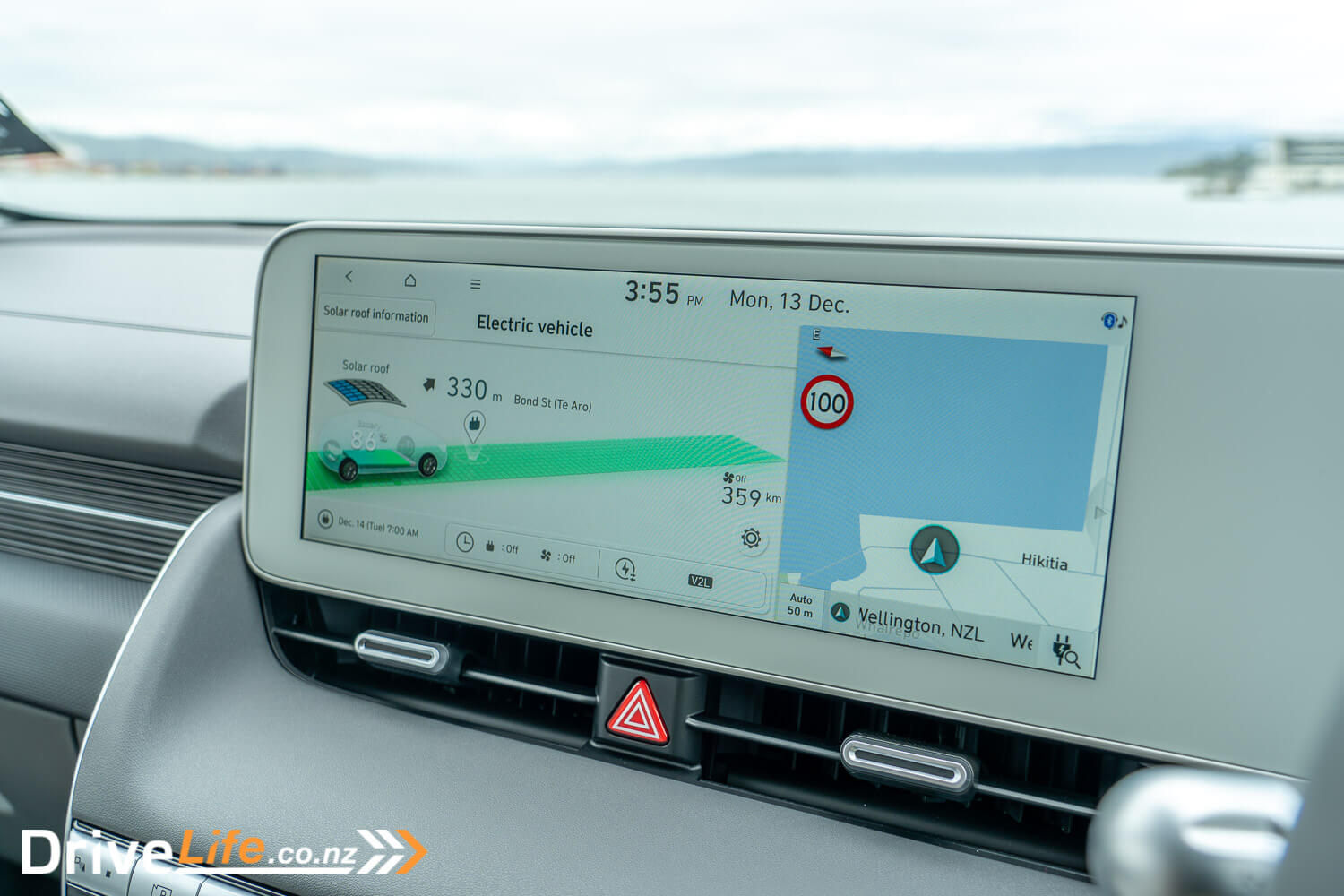
The Bose audio system itself is just okay, with nice separation and bass, and the controls are simple, although the frequency range wasn’t really mind-blowing. But, we have to say thank you to Hyundai for giving us a proper volume knob, and a physical track/station select button on the dash.
The steering wheel controls had me worried at first, they have that haptic look to them. That would be a shame as Hyundai has some of the best steering wheel controls available. But the steering wheel controls in the Ioniq 5 aren’t haptic; they’re simply flat and you still have to physically push on a button to make it do something, so there’s no danger of changing something by just sliding your finger over it. Phew! But honestly, just give me the standard Hyundai steering wheel controls, they are among the best in the business.
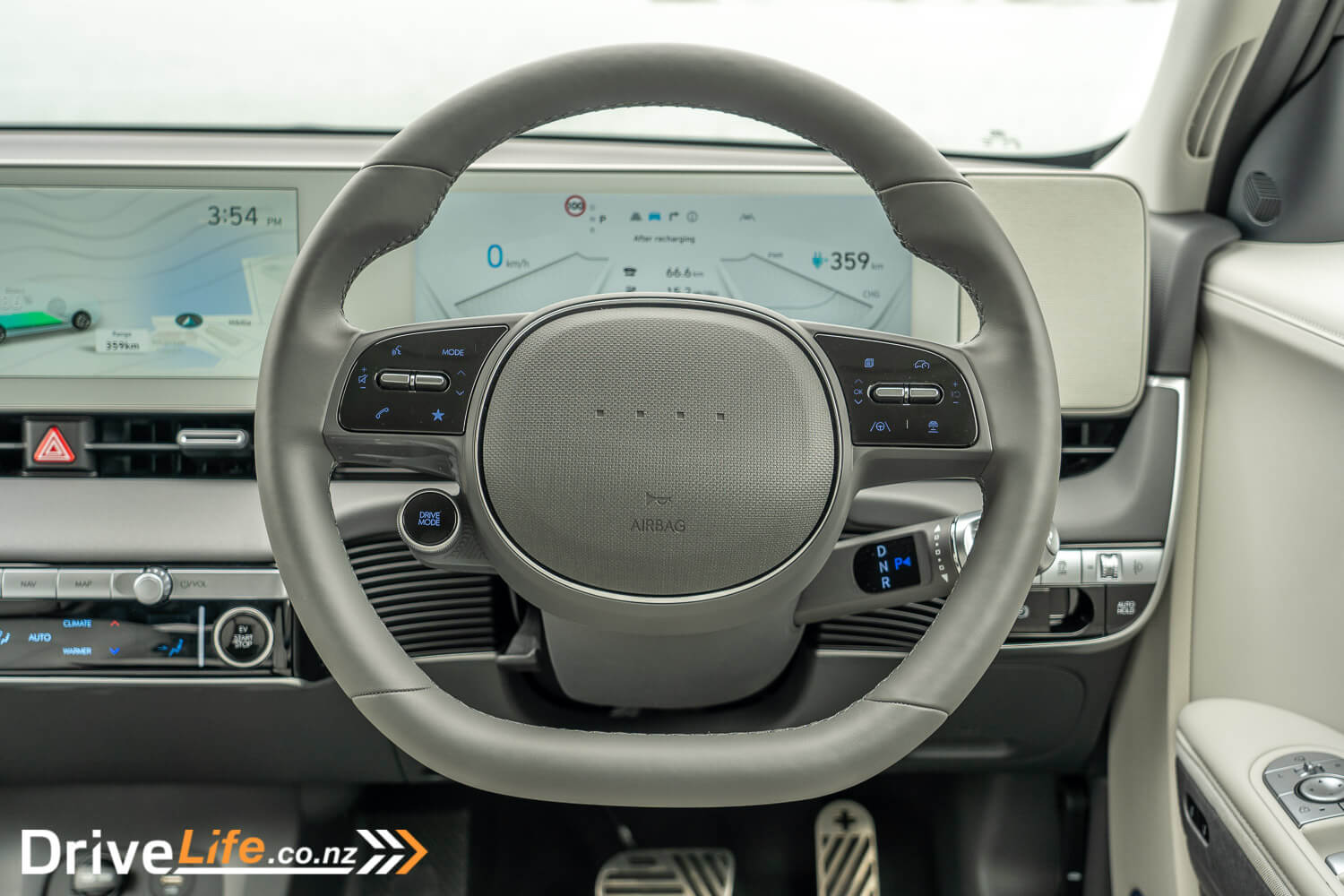
Another item carried over from other Hyundai/Kia products is the blind spot monitoring system. There are the usual icons that illuminate on the mirror if there is someone in your blind spot, but there’s also the driver’s display that changes too; if you indicate left, the speedo will change to a camera view on the left side of the car, and a right indicator will see the power meter change to a camera view on the right side of the car. It’s all very simple, and ingenious.
So what’s it like to actually drive the Ioniq 5? One word – excellent. That new chassis is fantastic, with excellent ride quality, low suspension noise and overall a feeling of cohesiveness. It’s a real joy to drive; not just from the instant torque of the EV side of things, but the general driving dynamics of this car are outstanding. It will get some body roll going if you push on a bit too hard, but the grip and handling are there. It’s a superb drive.
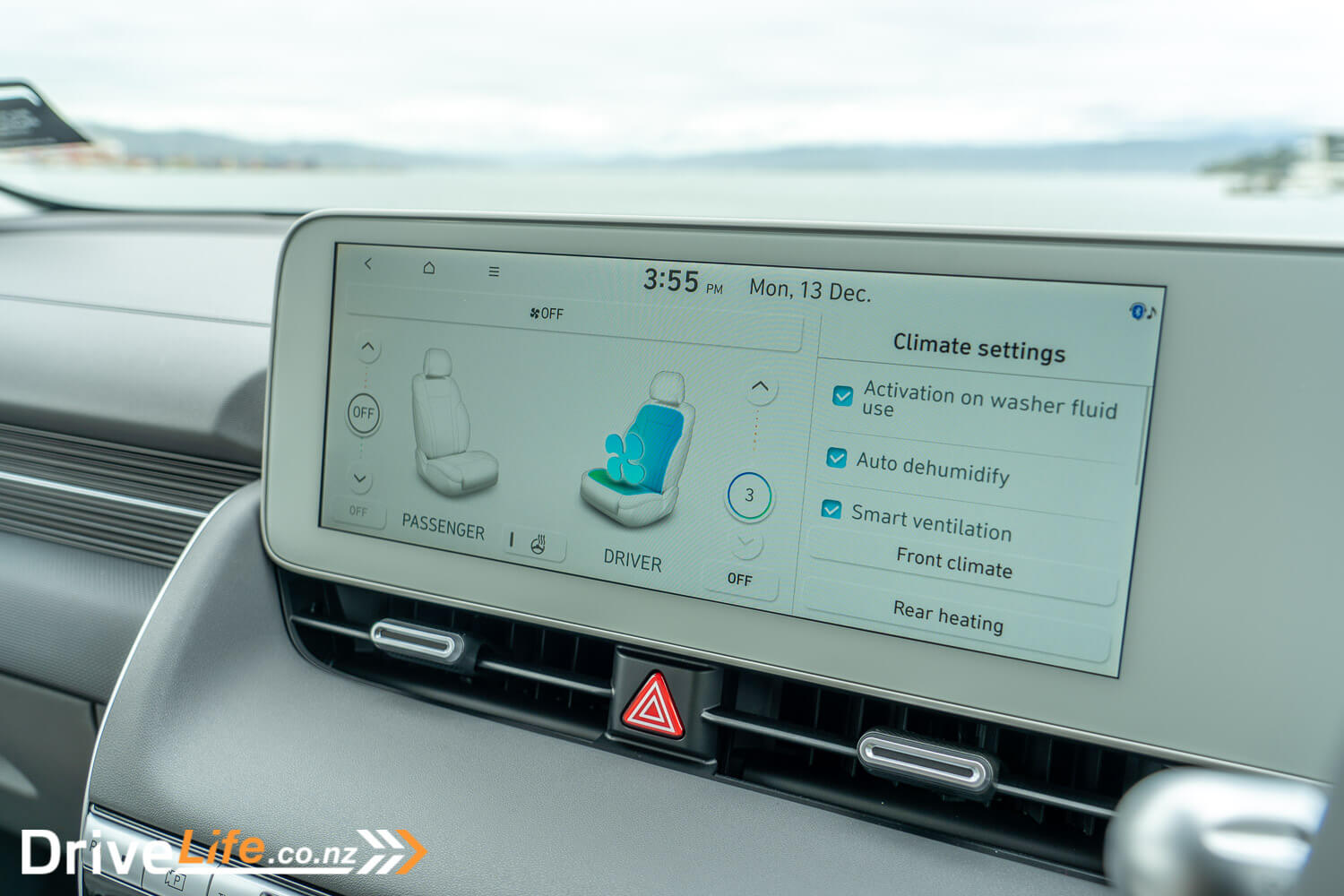
Since we’re testing the top-spec model, that means two electric motors, all-wheel drive, 225kW of power and 605Nm of torque. All that equates to good performance, and very easy around-town driving. Visibility is excellent with those huge windows. The car has options around brake regeneration too; there are 4 levels to choose from, starting at 0 (coasting). If you pull the left-hand paddle again once you’ve reached regen level 3, the car will switch into iPedal mode, which is essentially one-pedal driving. I used this on every drive, and it does work very well. On a very steep hill, you might have to use the brake pedal, but it’s a rare occasion if you are looking ahead of where you are driving. It’s a shame the car doesn’t remember you had selected iPedal the last time you drove it; every time you get in, it reverts to regen level 3 (if you were using iPedal).
On the daily commute, things are all too easy. The top-spec Ioniq 5 has auto-parking, but against its competitors, it has full auto-parking. This means it will not only do the steering, but will also do the gear changes, accelerator and brake. Once parked, it will put itself into Park, you can turn the car off and get out. It works brilliantly too, and one day when I was showing a passenger just how good it was, it got into a very tight park. I’m happy to say, you can press the auto-park button to get the car out of a tight spot as well.
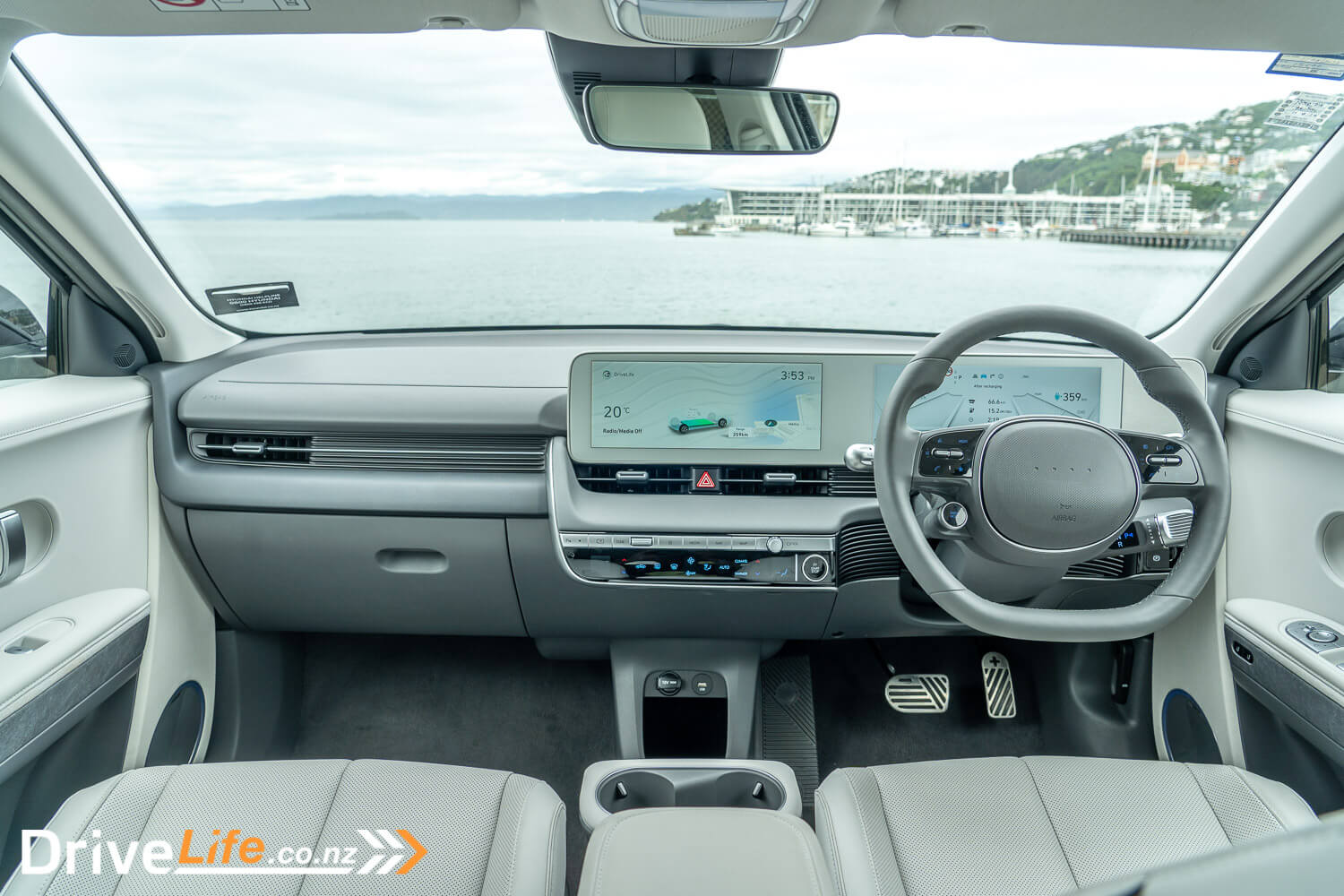
The only downside for me here was that you have to hold down that auto-park button for the entire time the car is parking itself. Not the end of the world, but it’s a long stretch from the driver’s seat. Still, full auto-parking like this we’ve only seen in high-end euro cars that cost a lot more.
If you really need to, the Limited model also has an extra feature, where it will bring the car out of (or put into) an angled parking spot without you being in the car using the keyfob. You’ll need to stand fairly close and the process for it is a little clunky, but it works. If someone walks in front of or behind the car while it’s moving, it will stop.
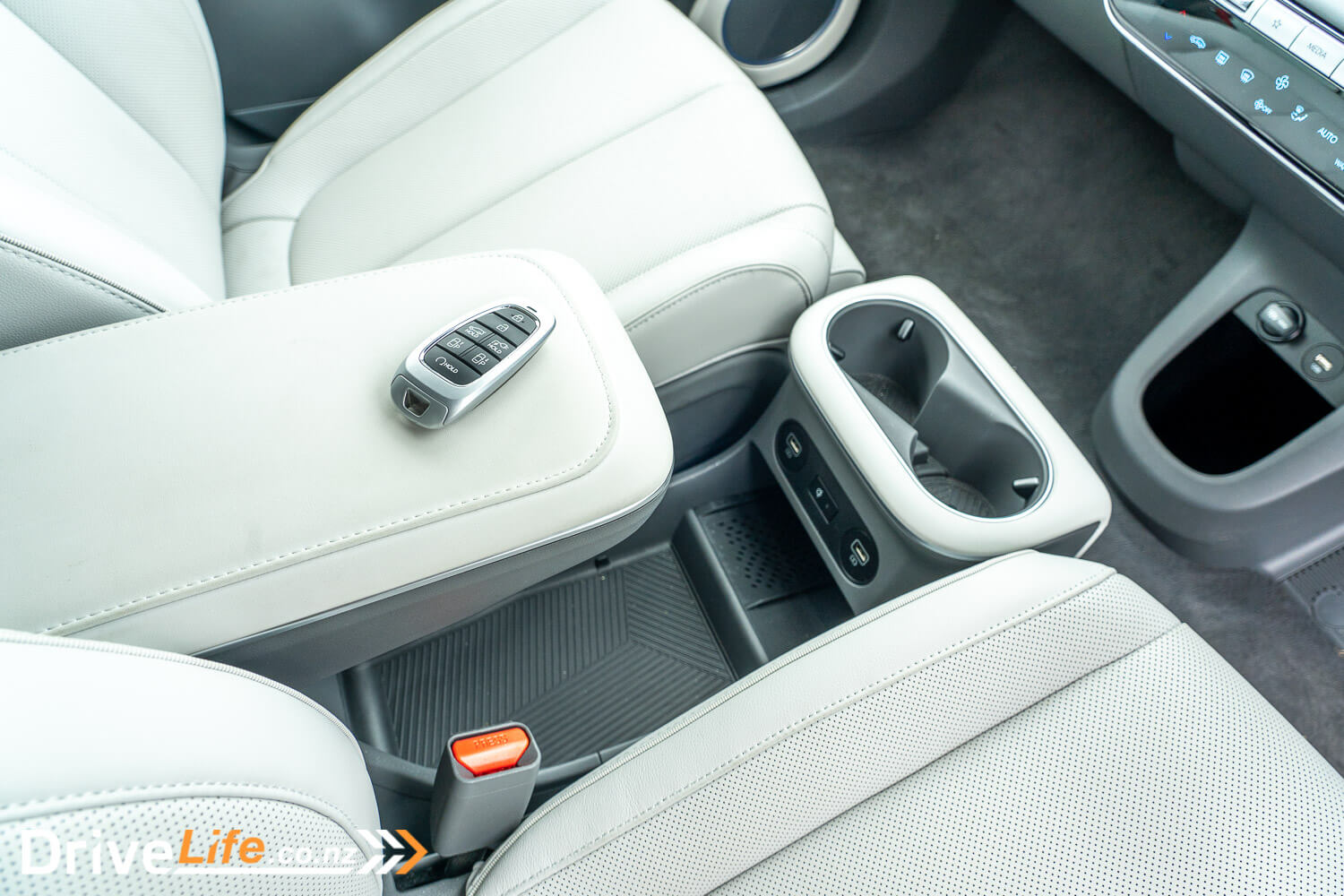
Our test car had the solar-roof option. It’s not actually an option, but treated as a different model of Ioniq 5. I had doubts about the $3k solar-roof; would that actually make that much of a difference? The solar panels’ primary aim is to keep the 12-volt battery topped up, and once it is, any extra charge would go into the main (drive) batteries. Our test car had done just over 2,000Km when I picked it up, but already those panels had generated 58kWh of charge. That’s far more than I would have laid money on, and after my 850Km of test driving, that number was up to 63kWh, and remember this was during a long spell of rain, so not full sun to make the most of those panels. It’s such a shame that you can’t option this on the lower models, they really do seem worthwhile. Basically, if you want the solar panel roof, you are up for the full $112,000 cost of the top-spec version.
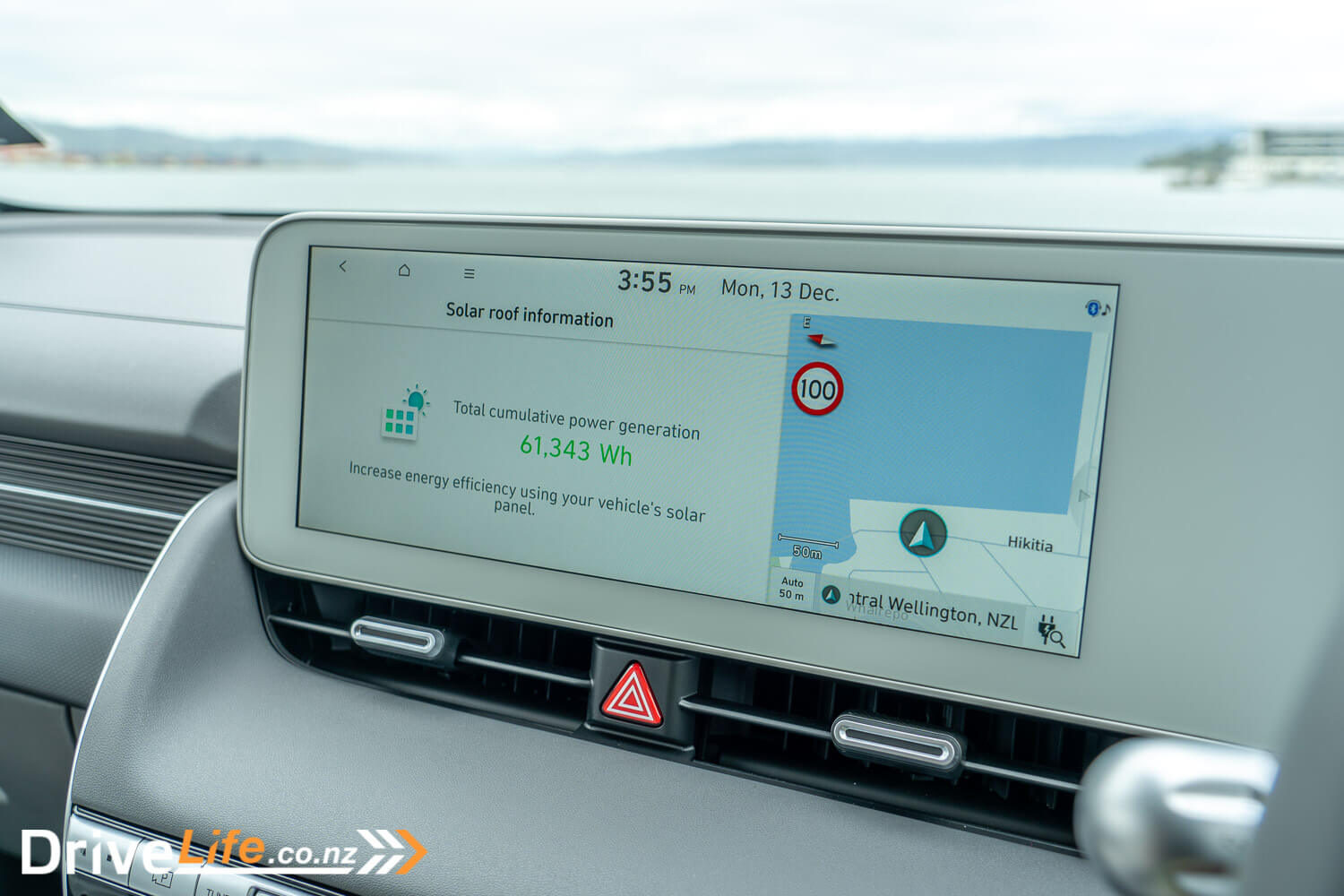
Other general niceties include a 360-degree camera, and thankfully this is one that automatically pops up on the screen as soon as you get too close to an object. It’s brilliant for getting around tight car parks.
During my time with the Ioniq 5, I decided to check out its range, so I topped it up completely at home with the supplied charger and the dash told me the car would go 415Km on the full charge. The gauntlet was thrown down, and I’d not be charging it again until it was almost flat.
While I was sucking down on that full charge, I decided to head over to Masterton. The car was showing 143Km of range left, and I had a 98Km drive – plenty! Another wet day, but the Ioniq 5 and I hit the road, and ended up (naturally) going over the Remutaka Hill. Time to test out AWD and all that instant torque. I had taken the EQA over here recently, and it thoroughly impressed me. The Ioniq 5 wasn’t as composed as the EQA, but it still did bloody well. Grip is good, although if you push on too hard you’ll get oversteer and then the front starts to slide out with understeer, going a bit harder still will see you 4-wheel drifting. But this is at speeds that most people don’t drive at, so the Ioniq 5 is composed and safe on the bendy bits. Like the EQA, keeping the car in iPedal mode is great, as it allows you to one-pedal drive around the corner, using severe regen to slow the car without weight transfer, and then use the instant torque to bolt out of the corner. It’s excellent in this respect.
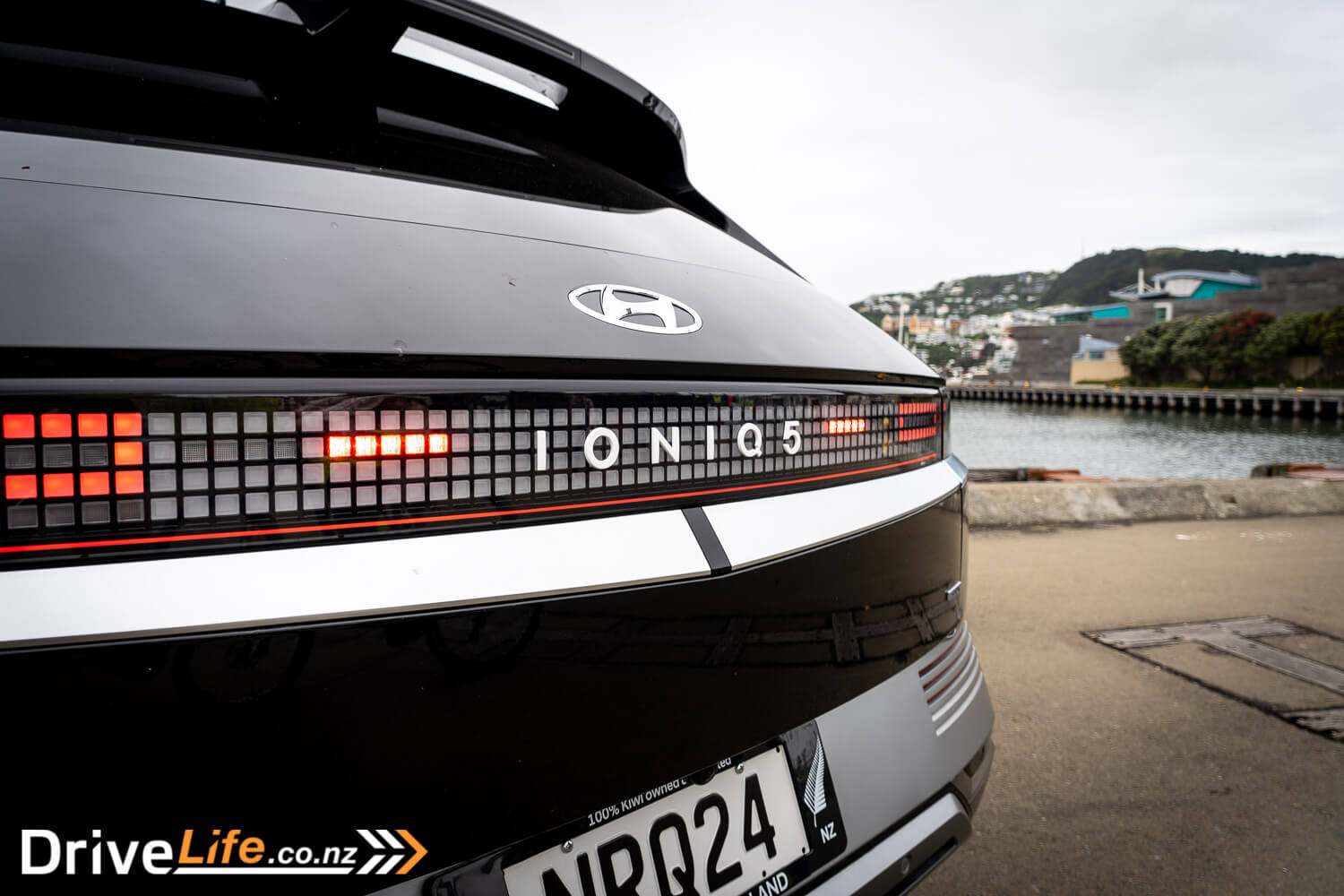
I eventually got to Masterton with 34Km of range left. Many people (likely who drive petrol cars) might be freaking out at that point, but after so many EVs, it’s all a bit ‘meh’ when the range gets low. I plugged in and the car charged up while I was drinking coffee, it was that simple. What about the total range? As mentioned, the car suggested I could drive 415Km on that full charge, and I managed to get 407Km out of it (adding on the 34Km left in the batteries), at an average of 16.4kWh/100Km. The EQA used 21.3, so the Ioniq 5 is far more economical than that car. Hyundai suggests a range of 481Km, so in real-world terms, I wasn’t too far off that.
While charging in Masterton, I did test out the ‘relaxation’ seats. This mode sees either front seat move backwards a little, then recline, then the electric footrest comes up. It’s based on an astronaut going into orbit, if you will. Is it comfy? While charging, yes. I can neither confirm nor deny I managed to get a short nap while plugged into the ChargeNet network.
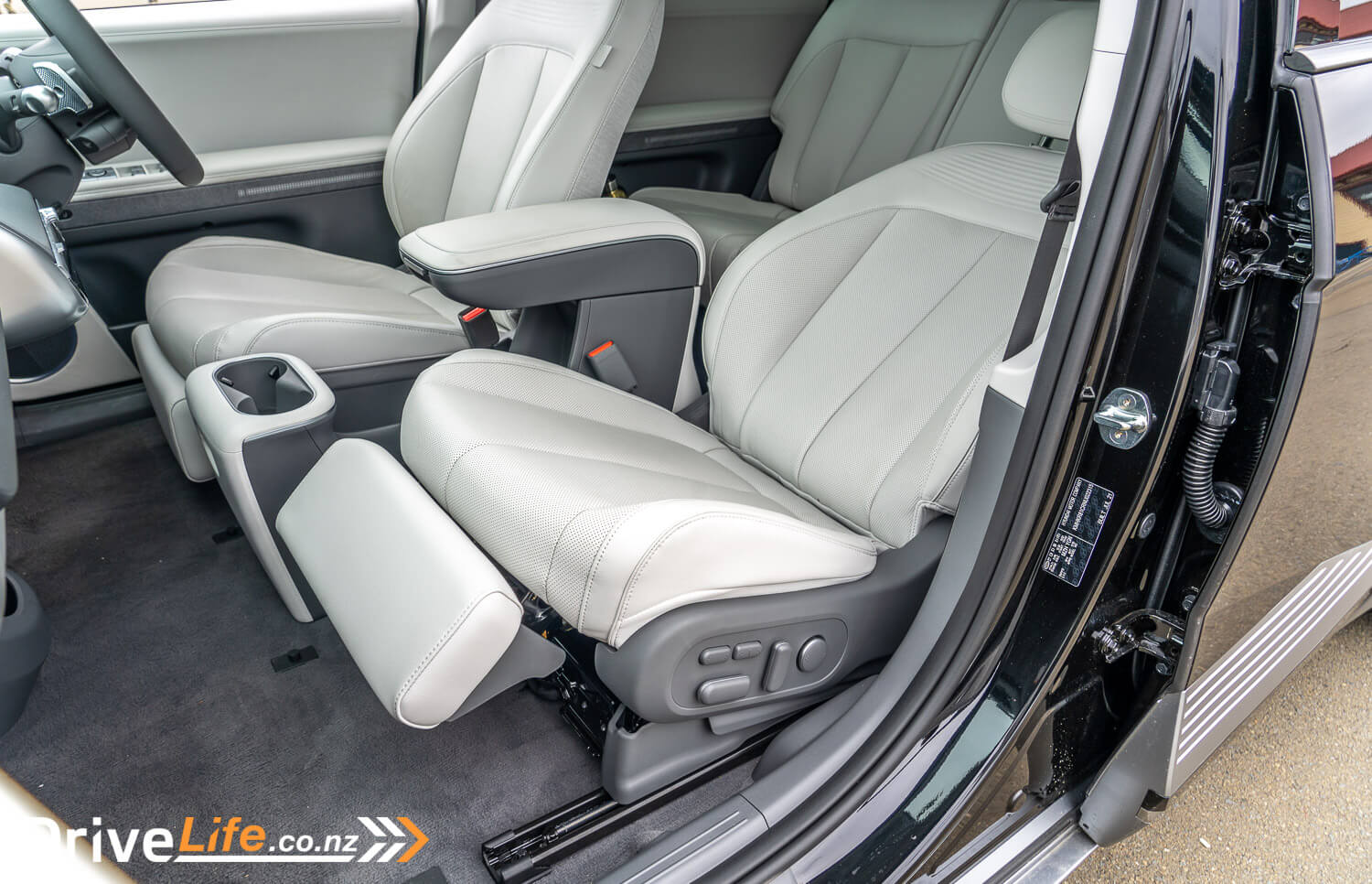
Still on charging, the Ioniq 5 has an electrically opening filler flap on the driver’s side of the car. You press a slightly raised part of the flap to make it open. I struggled with this to start with. It did look like it’s where you should press to open the flap, but I was pressing hard and it didn’t open. I cheated and used the button on the remote instead, and while charging went and read the manual. The slightly raised part of the flap is where you push, but you have to push quite hard, as all that does is push down on the ‘close’ button under the flap. It didn’t feel good to push it that hard, but so be it.
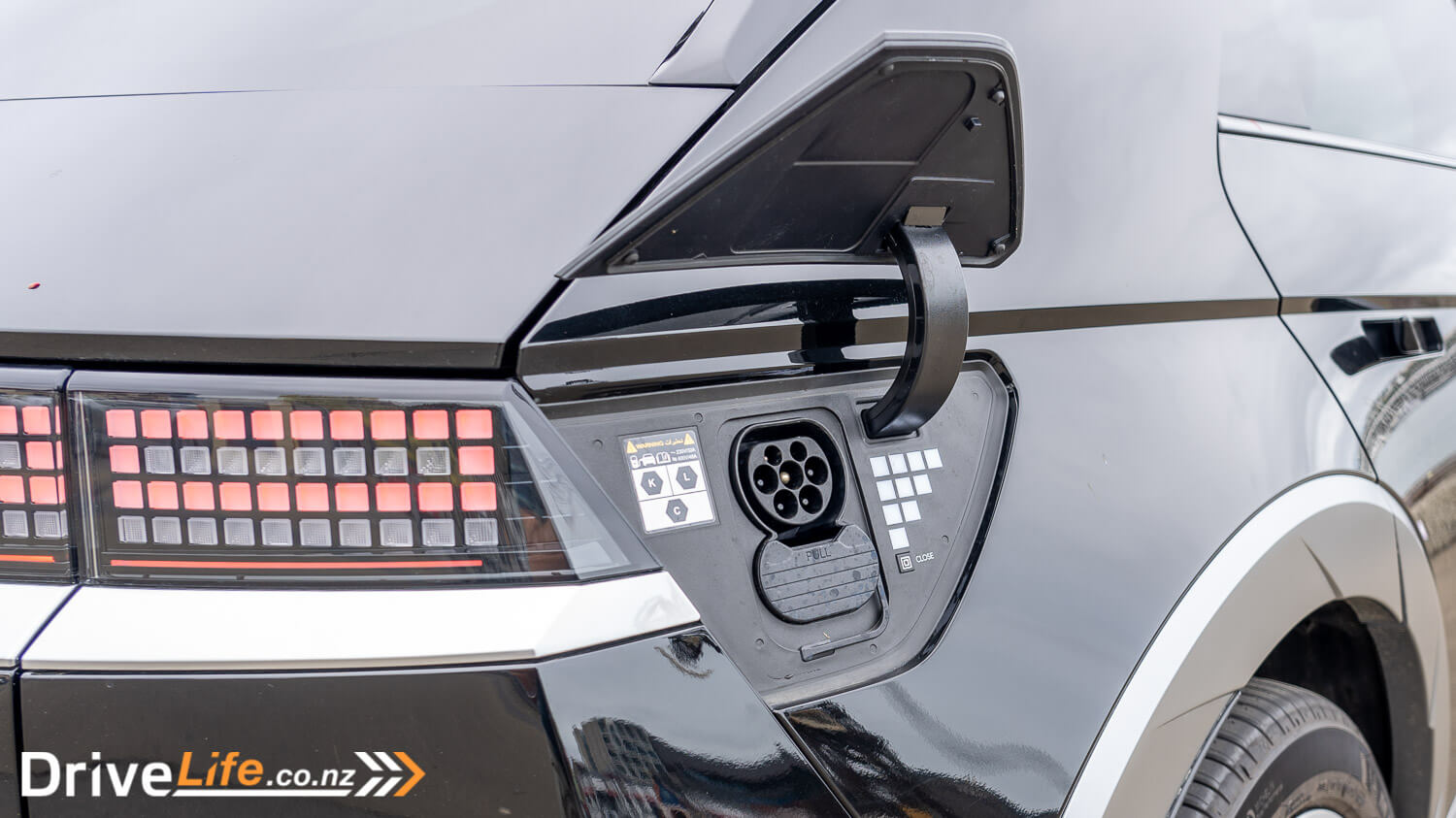
Seat comfort was a real mixed bag on the Ioniq 5; overall they are fine, but the top of the seats pushed my shoulders in, to the point where it was uncomfortable. On that trip to Masterton, I really felt it, and I know Rob and Alistair from DriveLife found the same issue, even though we’re all different heights. It’s like there’s something continuously pressing your shoulder blades in, and it didn’t feel pleasant at all.
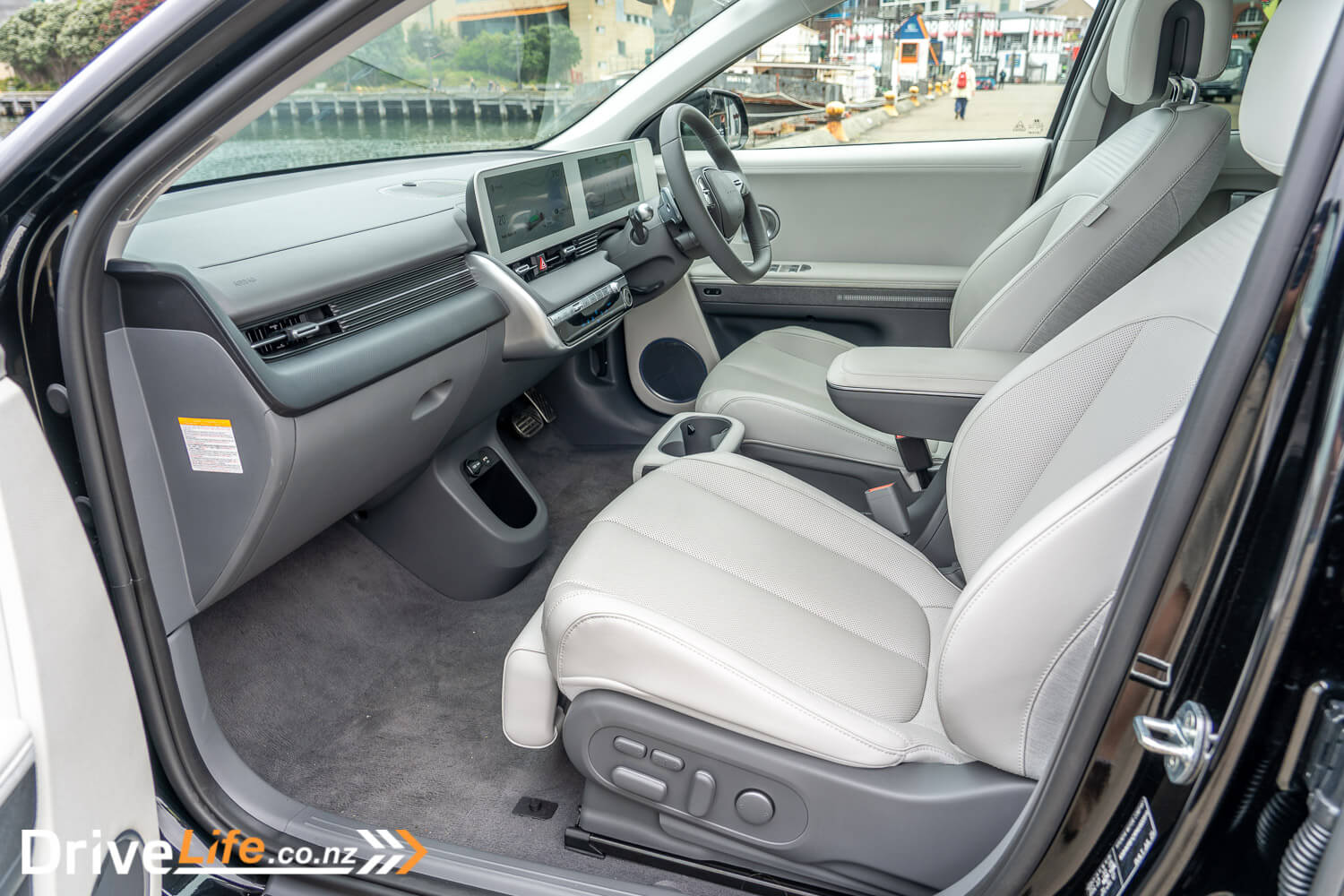
While our test car didn’t come with one, you can purchase a V2L External Adaptor (Vehicle To Load) for your Ioniq 5. This allows you to use the stored energy from the IONIQ 5 to recharge or power other electrical items. Recharge your e-bike, power electrical camping equipment, or even some domestic appliances. This is even possible when the vehicle is turned off. The V2L system can supply AC power of 230V/50 Hz which is the same as a standard wall socket. Drawing a maximum of 3.6kW (or 15 Amps) of power consumption.
For charging of the Ioniq 5, even with that big battery bank, I simply plugged the car into a standard household power socket each night. This easily did my next day’s commute/travel, and I only had to use a Chargenet commercial charger the one time in Masterton. People who worry about charging, shouldn’t. Just plug it in and walk away. The Ioniq 5 does have a nice feature of a verbal, ‘Car is on charge’ when you plug it in, which is a little cool.
Energy economy was bordering on excellent for our time with the car. Over 850Km, it used stored energy at a rate of 17.0kWh/100km. Hyundai suggests 19.0 so we beat that comfortably.
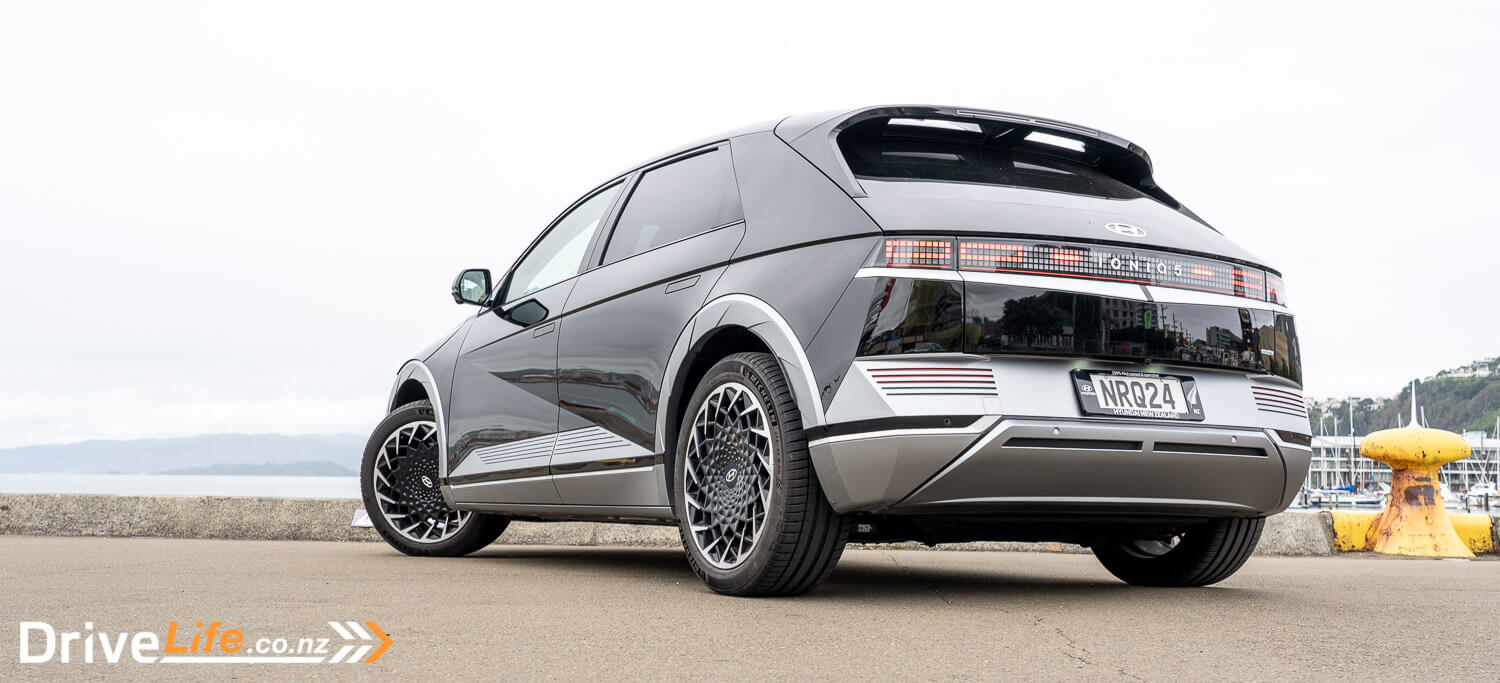
2021 Hyundai Ioniq 5 Limited: Alistair’s Point Of View
It’s not often that a car company gives their engineers priority over the accountants. The weight of evidence, being a marketplace full of derivative crossovers, shows that fact. However, in those rare moments where the engineers are given creative licence to produce something unique, we get a taste of the manufacturer’s true capability and the engineering flair of the individuals behind it.
Hyundai has certainly been exercising its creative flair in the past five years, delivering flagship performance cars, from the plucky i20N to the raucous i30N. Then, someone decided to haul the i30N’s engine into a Kona, birthing the Kona N. Brilliant.
The Ioniq 5 is set to be another flagship vehicle for the brand. It’s Hyundai’s push into the future, with a new ultra-high-tech electric SUV, with cyber-punk aesthetics. On paper, it looks fantastic. Finally, an EV that will put those Elon sycophants in their place. However, my feelings are somewhat conflicted after having driven the Ioniq 5.
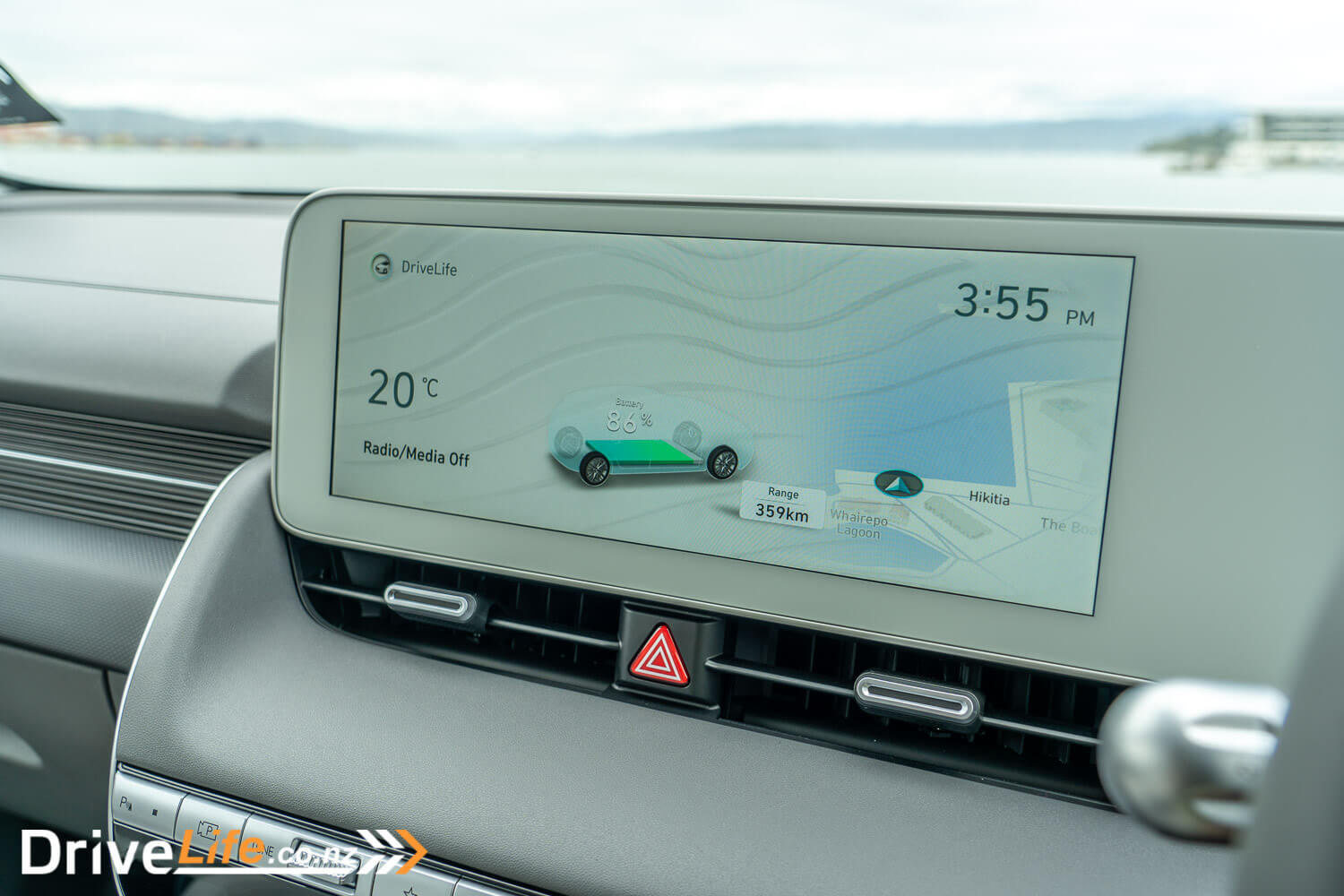
Let’s start with the retro-throwback styling. Without a doubt, it’s a real head-turner. But you could tell the looks weren’t of shock and awe, rather one of surprise and perplexity. Where someone looking at an Audi E-Tron GT RS would say “Wow, what was that?!” The Ioniq 5 garners more of a “Wow, what is that?!”. A subtle difference was and is, but the latter explains the internal conflict you could see on the faces of those admiring the Ioniq 5.
Don’t get me wrong, I love what Hyundai’s attempted to do here. I personally want to see more of it. However, the problem arises due to the size of the car. The bulky SUV proportions means it’s too bloated for its sharp-edged exterior. In my opinion, if the Ioniq 5 had smaller hatchback proportions, this would be an absolute stunner.
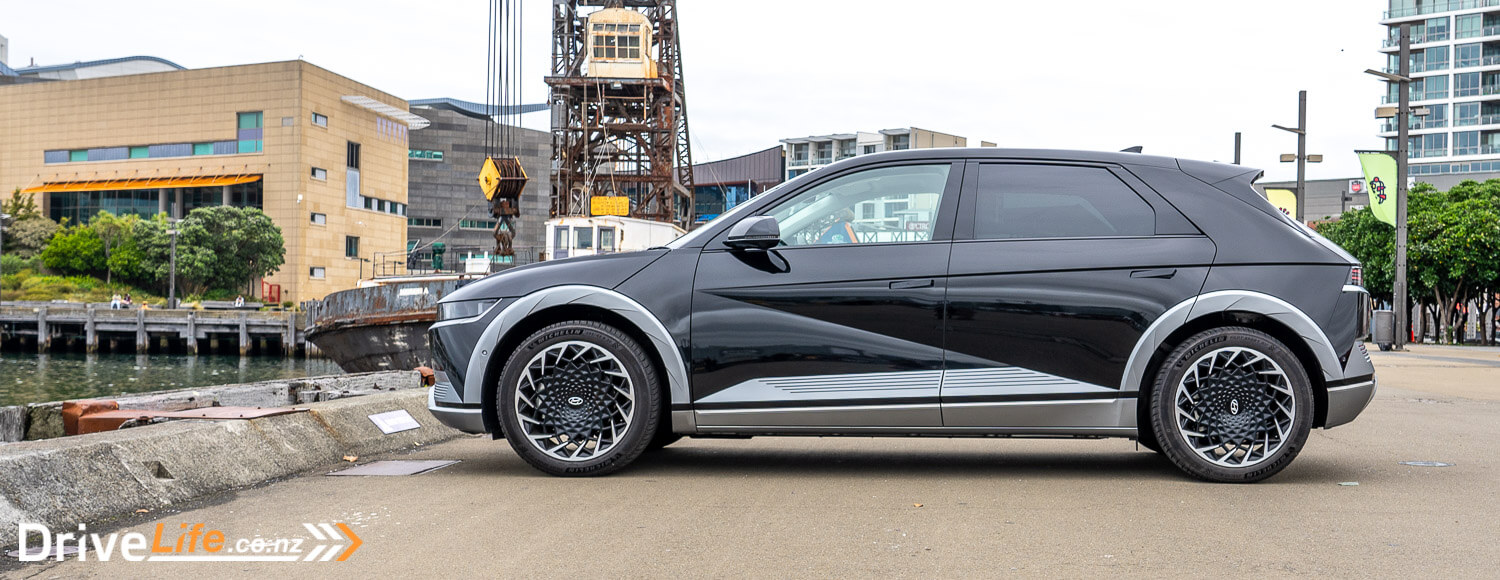
Of course, the exterior is only one matter. Once you step inside the car, the Ioniq seemingly does a complete personality flip. Rather than being edgy and avant-garde, the acres of white material signals something vastly more conservative.
Make no mistake, the Ioniq 5 is a luxury product. In terms of material quality, it’s punching well above its weight. It’s definitely the nicest interior I’ve ever seen from Hyundai. It’s also a complete tech-fest, as you’d expect. The twin-screen display, the super-adjustable recliner chairs and the solar panel roof which can charge the car, are among some of the highlights. However, for every genius idea, there was seemingly another ill-considered one.
The bolstering on the recliner chairs was far too tight for my shoulders. There’s no adjustability here either. Also, the heating and ventilating controls are hidden away inside the infotainment, which is already chocka-full of menus and information meaning they’re a pain to find.
The rear chairs are also electronically adjustable. However, if you position them in the wrong place, the seatbelts will give you some annoying trim rattle. Also, you can easily lose items in the boot behind the chairs. I managed to lose an entire bag of chips and didn’t notice until days after.
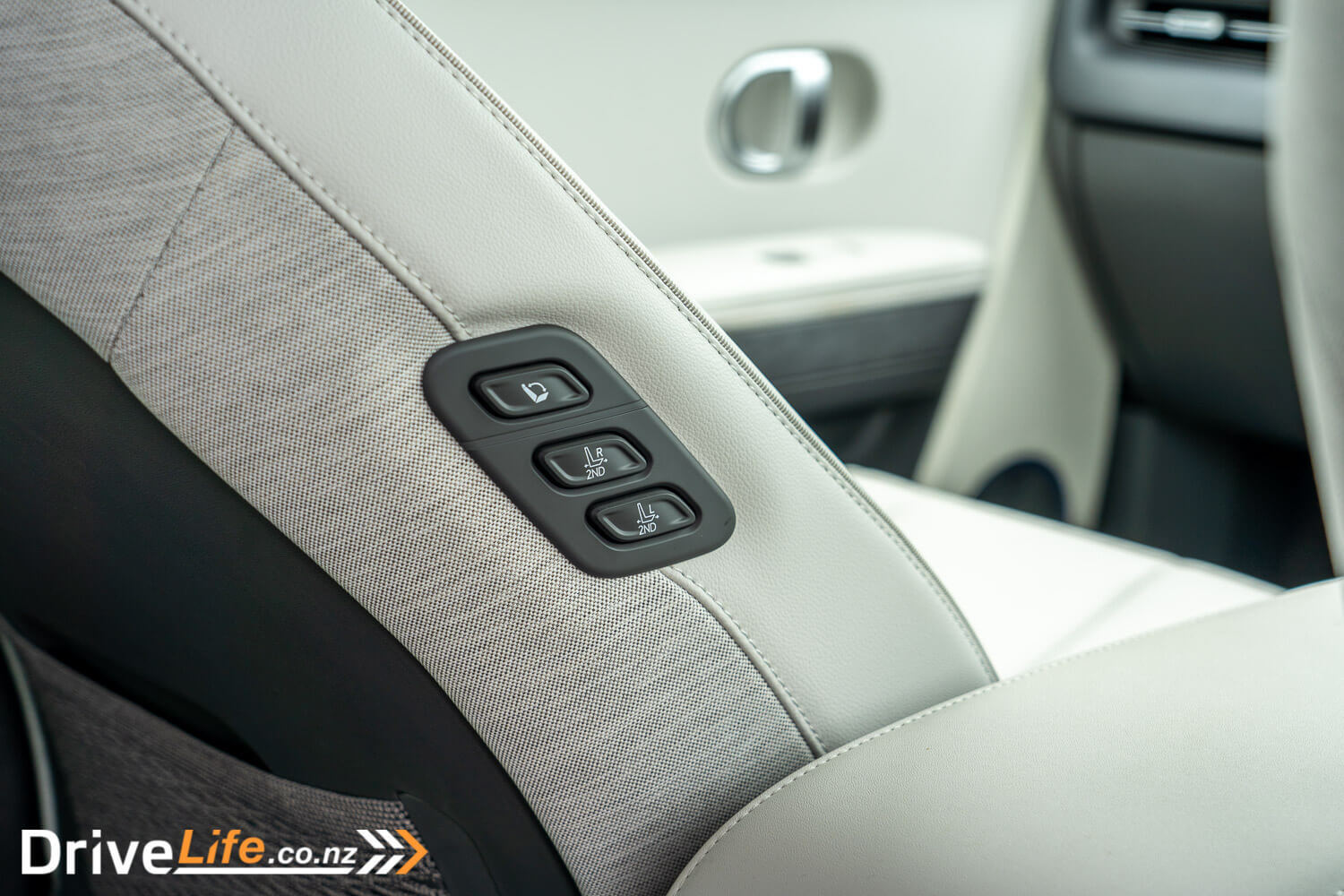
The Bose speakers were also quite average. Also, let’s not forget that the climate controls failed on our test car too.
Daily driving the Ioniq 5 was an absolute treat. It rides beautifully and the cabin is excellently insulated. The comfort bias means it’s suited for cruising, which you can do a decent chunk of in this long-range model. Otherwise, it’s not the most inspiring driving experience. It managed some spirited driving well, but you could tell it was starting to get a bit upset as you pushed on.
Overall, the Ioniq 5 is a worthy flagship vehicle. It rides like a cloud, has the material quality of a Mercedes, and has all the tech to put Tesla on notice. For $109,990, you’d expect no less.
On the other hand, I struggled to truly bond with the Ioniq 5. As cool as the design is, it doesn’t suit the proportions. There are also several little issues that prevented me from enjoying the Ioniq to its full extent. No doubt Hyundai will iron these out with time, but for now, the Ioniq 5 gets tepid reception in my eyes.
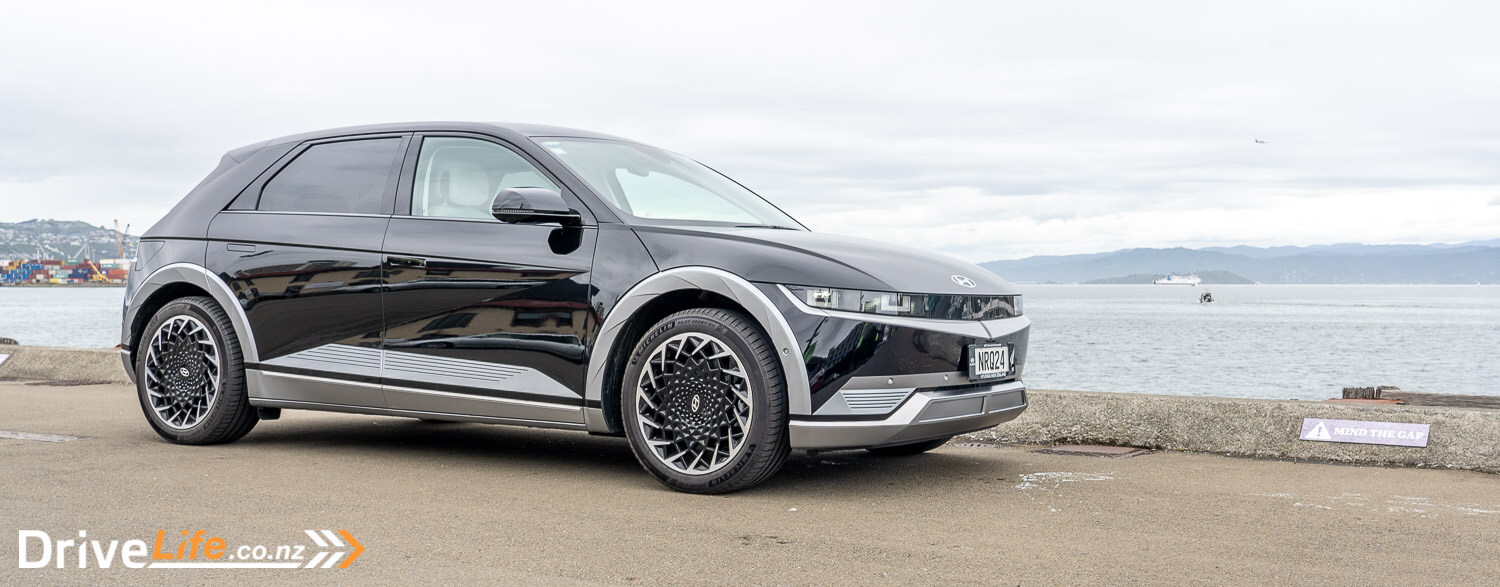
2021 Hyundai Ioniq 5 Limited: Rob’s Point Of View
My first impressions of the Ioniq 5 were good. I loved the futuristic styling that looks like nothing else, loved the external lighting. Loved the white interior, the flat floor, and the Apple-looking white-backed dashboard displays.
I wasn’t too keen on the gimmicky aerodynamic exterior door handles, but they work, and you can see from across the street if you remembered to lock the car. I was less sure about the interior door handles, everyone looks for a handle to pull the door shut and you have to tell them how to do it as they scrabble for the right spot.
The feel of the interior is good. Quality is great, everything feels solid and well-built, and the interior lighting is cool. I wasn’t so keen on the placement of the gear shifter stalk, I kept hitting it when I went for the indicators. The near-silence of general driving is very relaxing, and for commuting and everyday use I really like that.
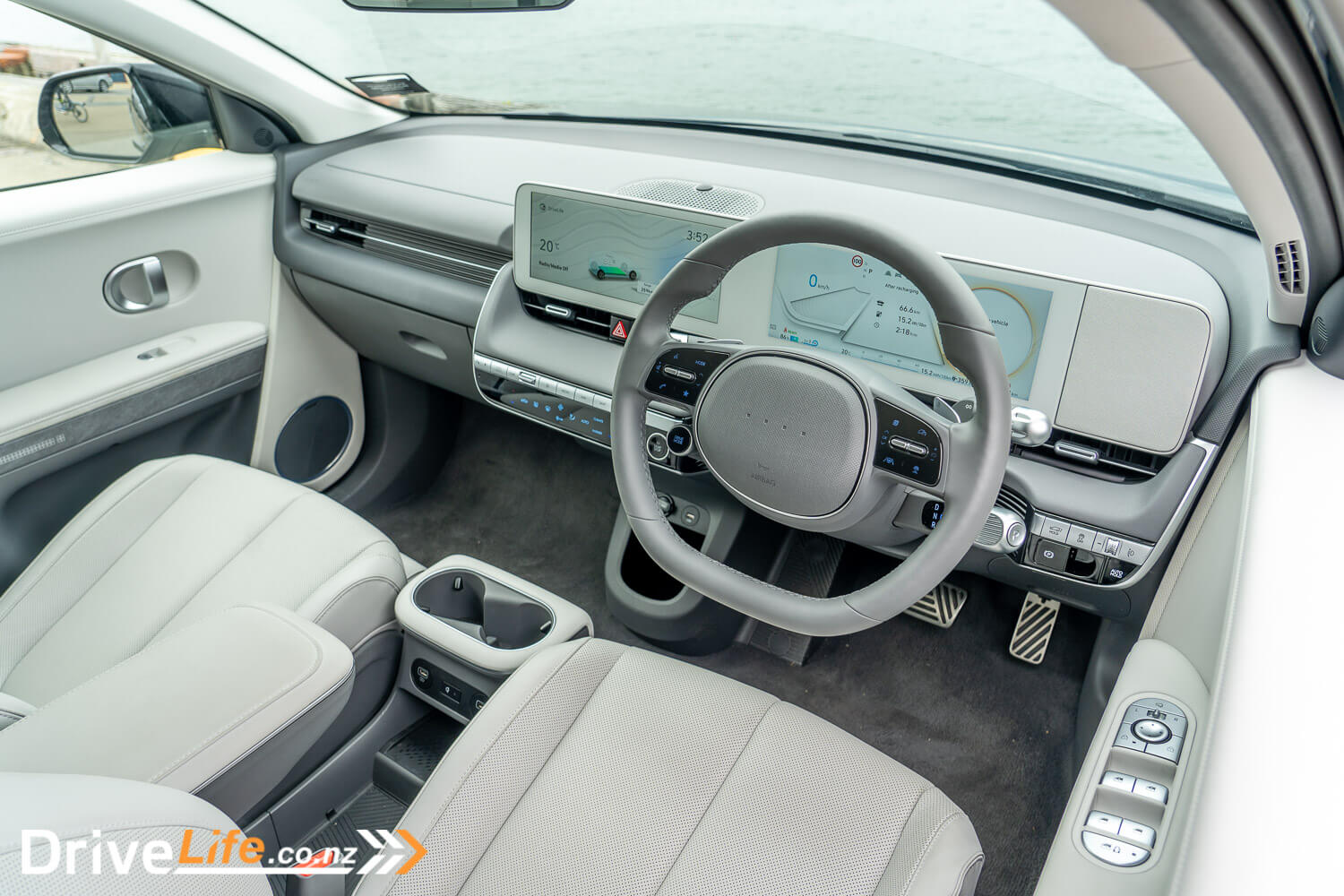
How is it to drive? Forgettable. It goes, it stops, it steers. It’s incongruously fast. Too fast actually. I know it’s easy to make an EV fast, but why? So you can beat people in the traffic-light drags whilst spilling your kids’ drinks? This is basically a family transport box on wheels. Does it need to get to 100 in the same time as an Audi SQ5?
So for me, once the initial wow factor of its design wore off, it started to irritate me. For a start the lack of a rear wiper was irritating in rainy weather. It’s too much like a Tesla – which might be a plus to some, and it may be the perfect car for you, but I was quite pleased to hand it back.
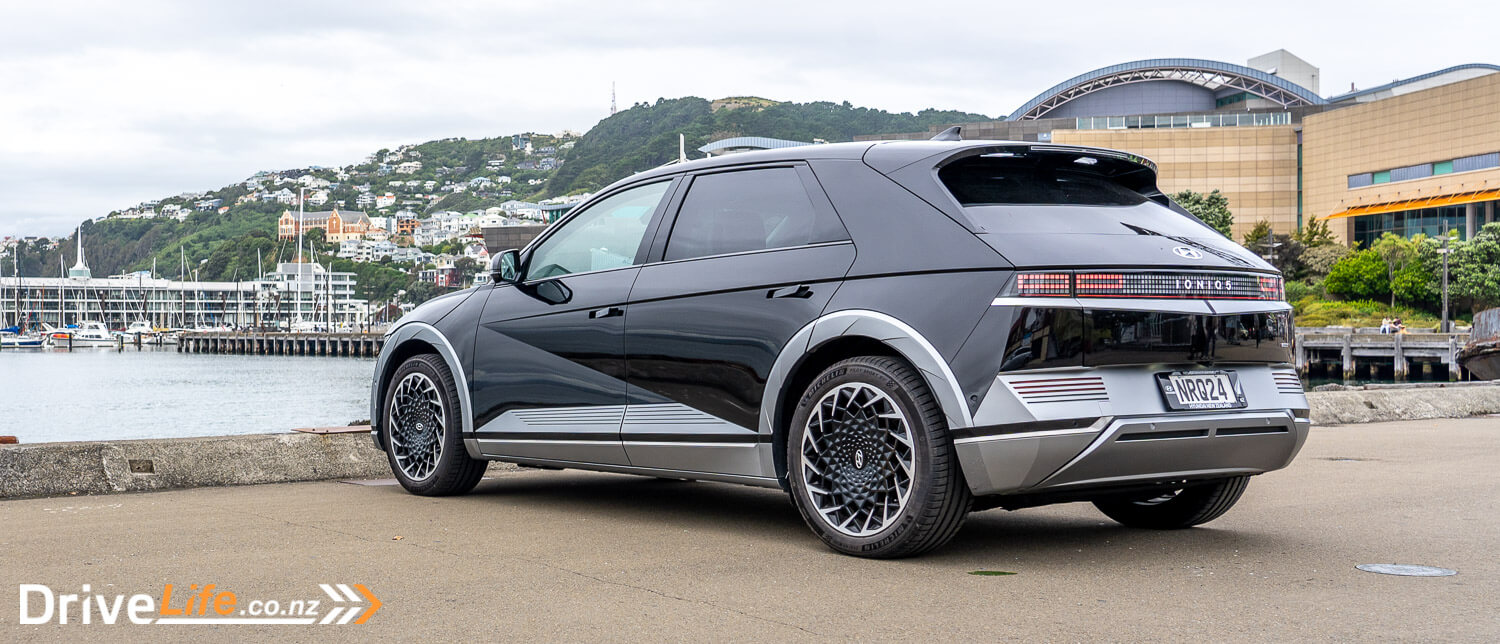
2021 Hyundai Ioniq 5 Limited – Specifications
| Vehicle Type | 5-door Electric SUV |
| Starting Price | $109,900 |
| Price as Tested | $112,900 |
| Power, Torque kW/Nm | Front: 70/255 Rear: 155/350 Combined: 225/605 |
| Spare Wheel | None |
| Kerb Weight, Kg | 2,100 |
| Length x Width x Height mm | 4635x1890x1600 |
| Cargo Capacity, Litres (seats up/seats down) | 537/1,587 Front trunk: 24 |
| Energy Economy, kWh/100km | Advertised Spec – Combined – 19.0 Real-World Test – Combined – 17.0 Low Usage: 6-10 / Medium Usage 10-19 / High Usage 19+ |
| Battery type | Lithium-ion polymer with water cooling |
| Towing Capacity Kg, unbraked/braked | 750/1,600 |
| Turning circle metres | 12.0 Small: 6-10m / Medium 10-12m / Large 12m+ |
| Warranty | 10 year / 200,000 km anti perforation corrosion body warranty 3 year / 100,000 km mechanical warranty 3 year / 100,000 km roadside assistance package 8 year / 160,000 km high voltage battery warranty |
| Safety information | ANCAP Rating – 5 stars Rightcar.govt.nz – 5 Stars |


